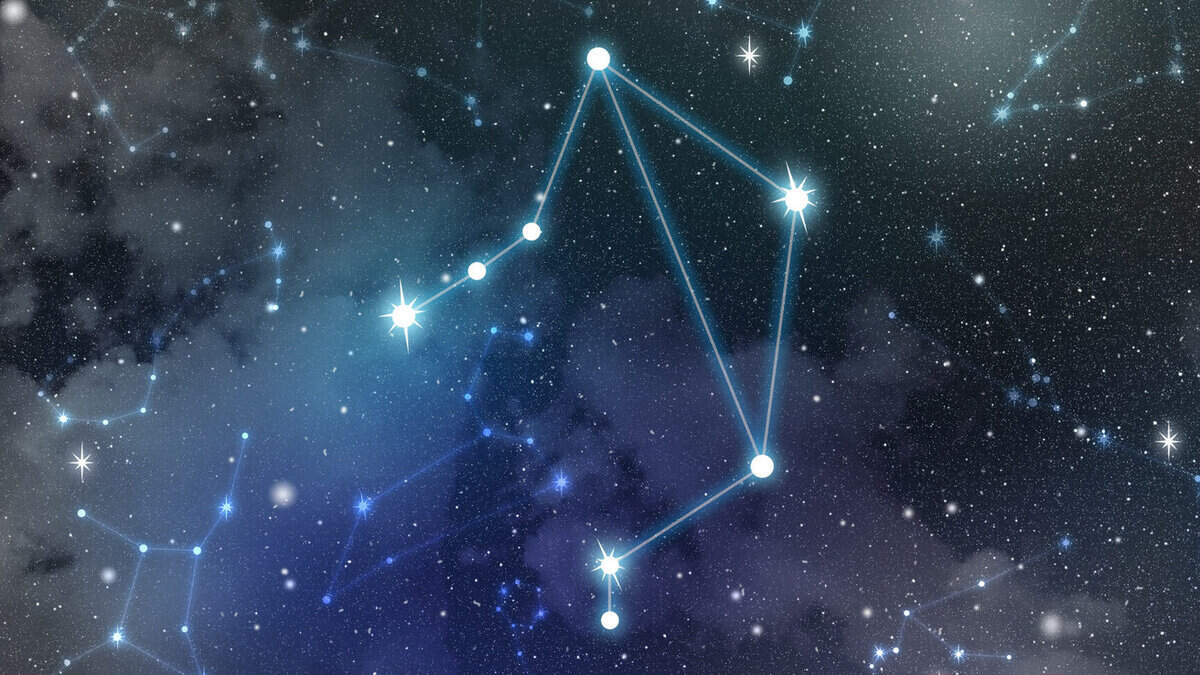
The vast expanse of the universe never fails to captivate individuals, and as a result, many young students view astronomy lessons at school as something enigmatic and enchanting. Among the most intriguing subjects in this field is the exploration of stars. For instance, conducting research on the Libra constellation provides an opportunity to delve into the ancient myths surrounding this celestial entity, its precise coordinates, and various other fascinating details. Additionally, students are allowed to enhance their project by presenting their findings in a visually engaging manner.
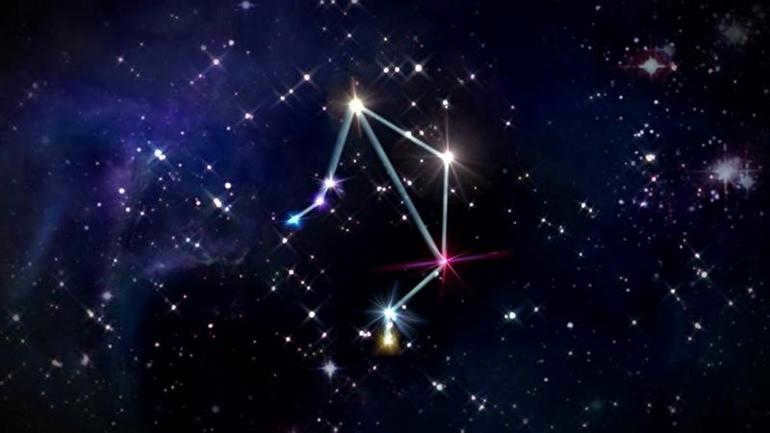
A Journey into the Past
There are a couple of ancient tales surrounding the constellation Libra. The first one originates from ancient Greece. The locals revered the goddess Astrea, who was the daughter of Zeus and Themis. Astrea would put individuals to the test and expose liars and criminals. To ensure fairness, she would blindfold herself and use scales to weigh a person’s actions. After conducting such examinations, Zeus would severely punish the guilty parties. As a way of expressing gratitude for her work, the God of Thunder decided to immortalize the scales in the night sky.
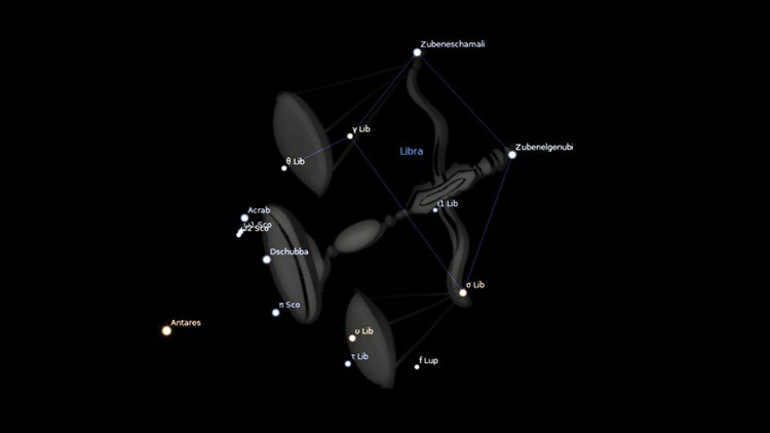
As per an alternate myth, Themis, who was the daughter of Uranus and Gaea, became the second wife of Zeus. She gave birth to the goddesses Clotho, Lahesis, and Atropos. It was because of her that the rule of law was upheld on Olympus. Themis was often depicted wearing a blindfold, which symbolized her impartiality. In one hand, she held a sword to punish wrongdoers, and in the other, she held scales as a symbol of accuracy and balance. Hence, by Zeus’ will, the scales appeared in the sky as a reminder for people to observe justice when they look at the constellation.
In ancient times of Egypt, the arrival of Libra was seen as the commencement of the initial harvest. Occasionally, this symbol was interpreted quite literally – the yield needed to be measured. Nowadays, it stands as one of the zodiac signs, standing out as the sole inanimate object in the group.
Main Features
Libra is ranked as the seventh largest constellation in the zodiac. It holds the 29th position among all the other constellations, and in the Southern Hemisphere, it holds the 10th position. The celestial equator and the ecliptic intersect in this constellation. It is worth mentioning that a significant part of Libra lies above the ecliptic line but below the equator, which categorizes it as part of the southern region of the sky.
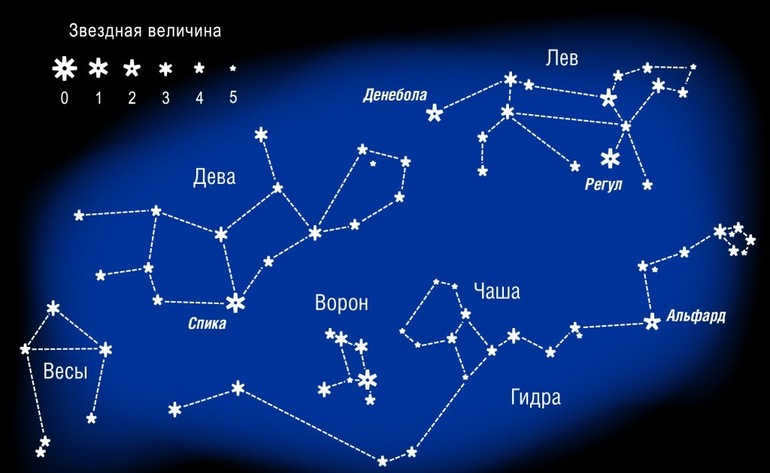
From October 31 to November 22, the Sun passes through the zodiac constellation known as Libra. It is visible in the night sky from December to September, with the best viewing conditions occurring in May when it reaches its highest point at midnight. Libra is easily identifiable to the naked eye as a triangular shape with strings hanging down. With the aid of a small telescope, it is possible to observe this constellation in more detail. Libra contains a total of 83 stars, with 7 of them being particularly bright and prominent: Zuben Elgenubi, Zuben Elshemali, σ Lib, υ Lib, τ Lib γ Lib, θ Lib.
It is crucial to acknowledge that astronomers from ancient civilizations employed slightly distinct methods in order to recognize constellations. The process of observing in the subtropical and tropical regions had its own unique characteristics. For instance, if an individual was situated in Athens and gazed at the stars, Libra would traverse close to the zenith, and the ecliptic line would become nearly perpendicular to the horizon. In this particular configuration, the constellation pattern takes on a slightly altered appearance. It bears a resemblance to a carousel or a pendulum.
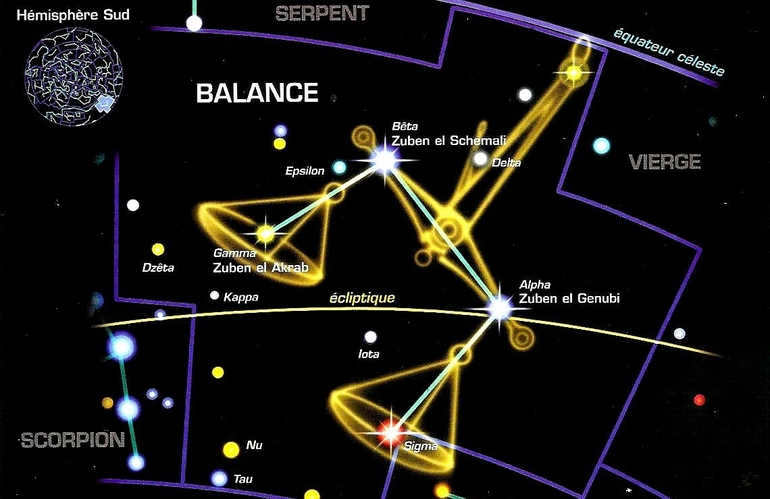
In the course of history, there have been changes in the interpretation of the zodiac signs. During the era of Ptolemy, all of the signs were believed to be animated, with the exception of Libra. Instead of having its own constellation, Libra was associated with equal parts of Scorpio and Virgo.
Ptolemy had a distinct perspective on the origin of Libra. He referred to them as “The Claws of Scorpio” but treated them separately. During that time, the Roman Empire particularly revered the goddess Justitia, who held the scales. It is possible that the astronomer chose to differentiate Libra in this manner.
A Glimpse into the Dazzling Universe
The enigmatic birth of various planets and celestial bodies remains veiled in secrecy. It was not until the advent of advanced telescopes that we could delve into this captivating realm. These remarkable devices unveiled a collection of brilliant stars nestled within the Libra constellation. Amongst these celestial wonders, the most notable ones are:
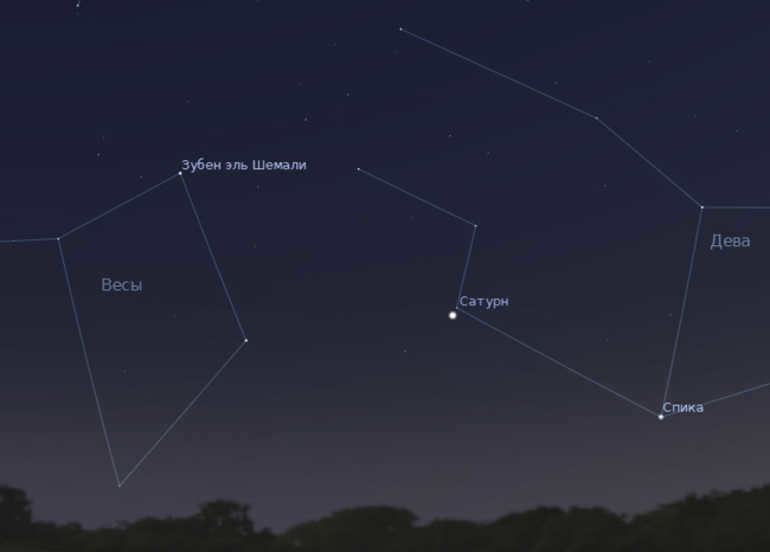
- Zuben Elshemali is a dwarf star with a blue-white appearance. Its temperature on the surface is approximately 11,000 Kelvin. Slight variations suggest the presence of an unseen companion from the perspective of Earth.
- Zuben Elgenuby is a complex system consisting of multiple components. Each component is situated at a respectable distance from the others. Alpha 2 Libra, one of the components, has a companion with a yellowish hue, and the surface temperature of this particular star is around 8500 Kelvin.
- Zubenalgubi is a star that exhibits pulsating behavior. It is also known as the red giant M4III. Astronomers have determined that it is currently in the final stage of its evolution.
The constellation additionally includes a star cluster and a galaxy. If you want, you can spot them using a basic telescope. It is possible that initially you may not find them, but don’t fret, as with practice you will develop a sense of where to locate each star.
Constellations vary. You can observe them throughout the year, but keep in mind that the visibility may vary depending on the time.
Ways of searching
Merely knowing the coordinates and the count of stars in the Libra constellation is insufficient. To locate this celestial object, a few guidelines need to be followed. Firstly, it is important to understand that in middle latitudes, the constellation does not rise very high above the horizon. The three prominent stars of Libra – blue, white, and orange – can be spotted by neighboring constellations, but this method is only suitable for experienced observers.
A universal approach for determining the position is to approach from the north. To achieve this, one must ascertain the location of the Big or Little Dipper. From the pair of stars Benetnash and Mitsar (handle of the bucket), a mental straight line must be drawn towards the southeast. If executed correctly, Zuben Elshemali, which is part of Libra, will become visible.

Locating constellations can be assisted by the moon, which passes through them once a month. It is best to search for constellations before or after the moon’s passage, as its brightness can overpower the stars.
Alternatively, the constellation Volopassus can be used to determine the position. It has a shape similar to a parachute, with its right corner known as Seguin. A mental line can be drawn from Seguin to the left sling, where a bright point known as Izar can be found. From Izar, one can descend southward to the star Zuben Elshemali.
Experienced observers may easily spot a bright point in the lower left part of the sky – Antares. By looking above and to the right of Antares, a rhomboid shape formed by four stars can be found, which represents the constellation Libra.
Helpful information
When putting together a report, it is important for a student to not only gather information, but also organize it. It is not necessary to overload the report with excessive information and make it lengthy. A brief oral presentation of 10-15 minutes is sufficient for a classroom presentation.
The presentation can include a visual aid such as a diagram of the Libra constellation and a detailed description of the stars. Visual information is easier to remember and captures interest.
You have the option to include intriguing facts about the Libra constellation:
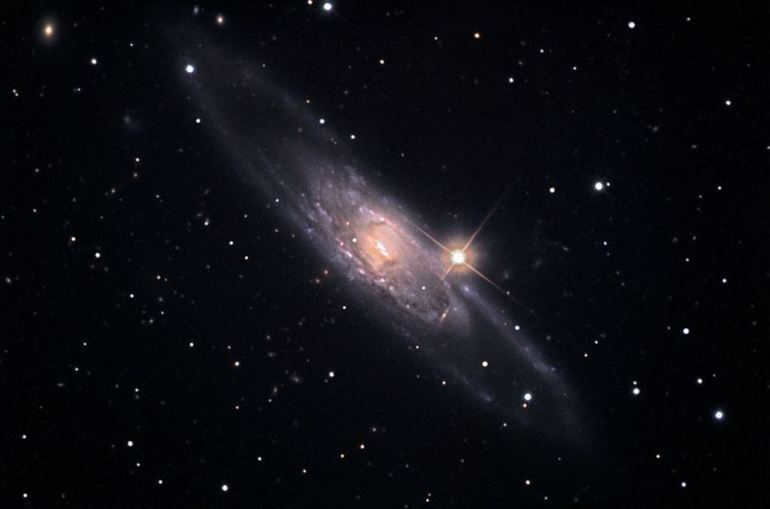

- The constellation Libra was originally a part of Scorpius and occupied its claw.
- At one point, Libra was considered an asterism, which is a group of stars that is easily visible and has a well-known name.
- Out of all the signs of the zodiac, Libra is the only one that represents an inanimate object.
- In Latin, the constellation is called Libra.
Moreover, there are various ways to make the learning process interesting and modern, such as telling myths and legends, conducting a quiz on the topic, or assigning a project. Non-traditional methods like small educational videos can also be used to provide useful information. It is important to encourage children to express their creativity.

Back in ancient Greece, the constellation was linked to the daughter of Zeus and Themis. She assisted her mother in upholding law and order. To fulfill this role, Dica wore a blindfold, enabling her to observe people’s actions without bias or emotion. If Dicke spotted any dishonesty or injustice, she would bring it to the attention of her father, who would then administer punishment. This system ensured that balance and order prevailed.

Goddess Dike
To ensure that people would always remember the divine judgement, Zeus decided to immortalize his daughter by placing her scales in the sky, creating the constellation. This celestial formation serves as a constant reminder of the importance of justice, fairness, and balance. In the Roman Empire, Libra was associated with the goddess Astrea, who was believed to be the embodiment of justice. Regardless of the specific interpretation, the stars of Libra symbolize the principles of justice, law, and order.
Additional Items
Libra includes a collection of 83 stars and does not have any Messier objects. However, despite this fact, there are several intriguing features to note. One fascinating aspect is the presence of the May Librides, a cluster of meteor showers. Furthermore, within the constellation Libra, there are spiral and lenticular galaxies, as well as a globular cluster.
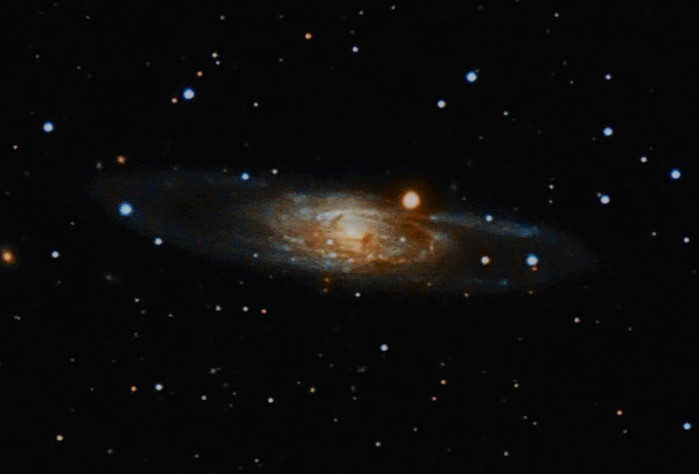
NGC 5792.
Brightest stars in the Libra constellation
The Libra constellation is home to three stars that are known to have planets. The star with the highest brightness in this constellation is Zuben El Shemali, which has an apparent magnitude of 2.61. In the month of May, there is a meteor shower associated with the Libradus constellation.
Beta Libra, the brightest star in the constellation Libra, is located about 185 light-years away from the solar system and has a stellar magnitude of 2.61.
Zuben Elshemali, also known as Beta Libra, is classified as a blue-white dwarf with a star rating of B8 V. It is known for its fast spinning, with an expected speed of 250 km/s. Moreover, it has a radius 4.9 times larger than that of the Sun and shines about 130 times brighter.
The star is named Zuben Elshemali, derived from the Arabic word الزبن الشمالية, which means “northern claw”. In Latin, it is referred to as Scale in the North or “northern bowl”.
While Beta Libra is considered a lone star, it exhibits slight periodic changes in brightness (0.03 stellar magnitude), suggesting the presence of a companion star.
The celestial body Zuben Elgenuby or α Libra
Alpha Libra is the second most luminous star in the Libra constellation. It is a binary star system consisting of two primary components that create a double star. These two stars have a shared origin and were formed approximately 200 million years ago.
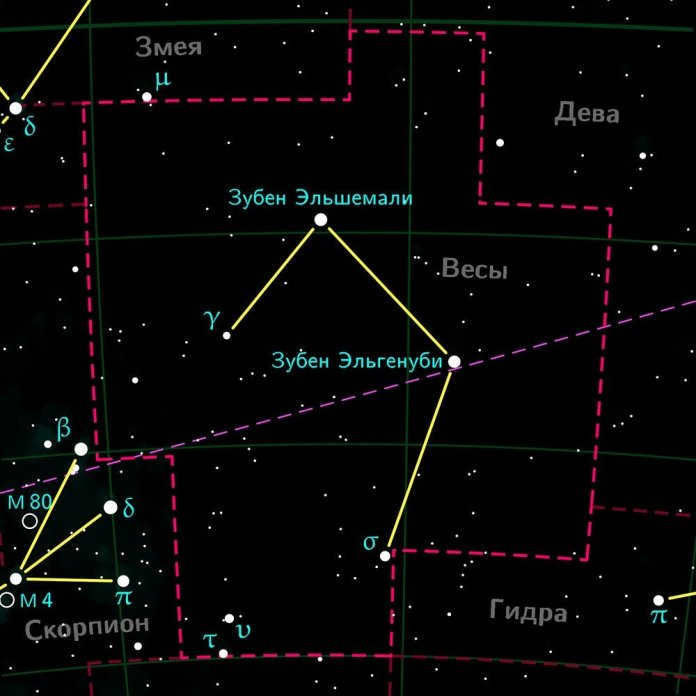
The constellation Libra gets its name from the Arabic word الزبن الجنوبي, which means “southern claw”.
Alpha 1 Libra, one of the main components of the system, has a visible magnitude of 5.153. It is a spectroscopic double system with an orbital period of 5870 days. The two components are separated by 10 units. This system has a stellar rating of F4 and an apparent magnitude of 5.153. It is located 74.9 light-years away from Earth.
Alpha 2 Libra has an apparent magnitude of 2.741. It is a spectroscopic double system that is separated from Alpha 1 by approximately 5,400 astronomical units. It has a stellar rating of A3 and an apparent magnitude of 2.741. It is situated 75.8 light-years away from the Sun.
The star Zuben El Aqrab or σ of Libra
Zuben El Aqrab, also known as Sigma Libra, is a red giant star classified as M3/M4 III. It has an apparent magnitude of 3.29 and is located approximately 288 light-years away from the Sun.
Originally named Gamma Scorpio, Sigma Libra is situated quite far from the boundary of the Scorpius constellation. However, in the 19th century, it was officially designated as Sigma Libra, a name that was confirmed by the International Astronomical Union on July 31, 1930.
HD 140283, the oldest star in the universe, is believed to have formed shortly after the Big Bang.
Composed almost entirely of hydrogen and helium, HD 140283 is a subgiant with a very low metal content. Its iron content is less than 1% of the solar content.
The estimated age of the star Methuselah is 14.46 billion years, slightly older than the estimated age of the universe, which is 13.77 billion years. However, the uncertainty in these values means that the star’s age does not actually contradict the age of the universe.
Located 190.1 light years away from us, HD 140283 has a stellar magnitude of 7.223.
The star Gliese 581 (Gliese 581)
Gliese 581, also known as Gliese 581, is a red dwarf star of the M3V classification. Its apparent magnitude varies between 10.56 and 10.58. Situated at a distance of 20.3 light-years from our Sun, it is considered to be relatively close by astronomical standards.
Ranked as the 89th closest star to the Sun, Gliese 581 is significantly smaller and less bright than our Sun. With only a third of the Sun’s mass and a visual brightness of just 0.2%, it pales in comparison. This star can be found approximately two degrees north of the brightest star in the Zuben el Shamali constellation.
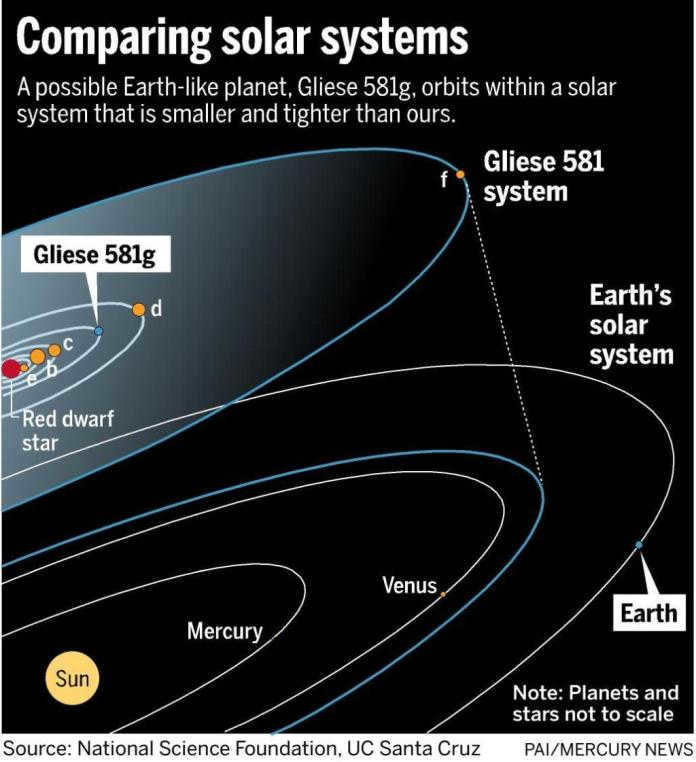
A planetary system consisting of at least three and potentially six planets has been found around the star Gliese 581. The initial exoplanet in this system, Gliese 581 c, was detected in April 2007. However, it is likely too hot to be within the habitable zone. Another planet in this system, Gliese 581 d, is yet to be confirmed and might be located either inside or just outside the habitable zone. Gliese 581, which was discovered in April 2009, is the smallest planet in this system.
Interesting Trivia
A fascinating discovery revealed that there are a total of 83 stars that can be seen within the Libra constellation. Surprisingly, only 6 of these stars have a stellar magnitude that exceeds 4 degrees.
What makes it even more intriguing is the fact that Libra stars were once categorized as part of the Scorpius constellation. It was only later that they were recognized as a separate section. Interestingly, this particular area was often referred to as the “pincers” due to its resemblance to a similar part of Scorpio.
At one point in history, Libra served as an asterism.
Perhaps because this constellation appeared relatively late in the field of astronomy, it was named after an inanimate object. In fact, it is the only constellation of the Zodiac to bear an inanimate name.
On a side note, it also has a Latin name in astronomy – Libra.
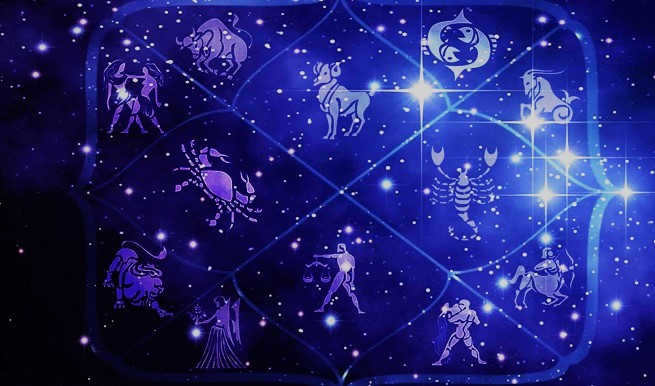
The Zodiac signs
Deep space objects in the Libra constellation
NGC 5792 Galaxy
NGC 5792 is a spiral galaxy with a reticulated structure located in the Libra constellation. It has an apparent magnitude of 12.1 and is approximately 83 million light-years away from the Sun.
NGC 5890 Galaxy
NGC 5890 is a lenticular galaxy situated in the Libra constellation. It was first discovered by Ormond Stone, an American astronomer, in April 1785. The galaxy has a visible magnitude of 14.
Notable celestial bodies
The prominent celestial objects in this particular area form a rectangular shape, which serves as the foundation for the symbol representing the constellation Libra.
Photograph
Alpha is a binary star system known as Zuben el-Genoubi. Beta, on the other hand, is referred to as Zuben el Shemali. Interestingly, these significant luminaries are commonly known as the Southern and Northern Claws.
Gamma is recognized as Zuben el Aqrab,
Ypsilon and Theta Libra are categorized as orange giant stars.
The star Brachicum is identified as Sigma. Furthermore, it is worth noting that this particular star exhibits pulsating characteristics. Additionally, this red giant star symbolizes a hand.
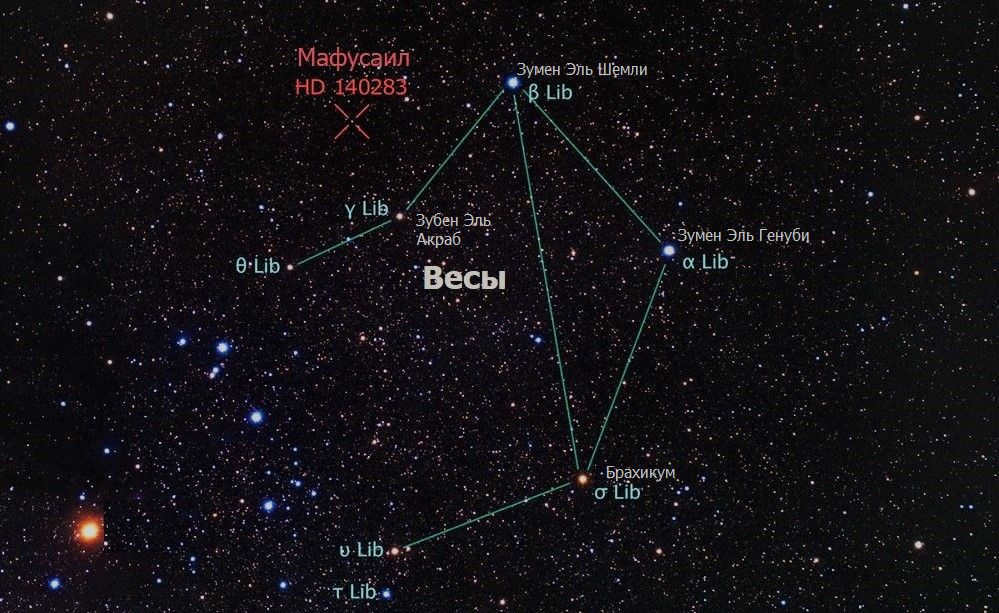
Libra constellation
On the flip side, Tau and Delta are both small stars. They are both of a blue and white color.
Iota is a combination of subgiants and small stars.
Other stars in the Libra constellation include Gliese 570 and 581; 48; 23; and 141937.
Interestingly, the oldest star in the world resides within the Libra constellation. Its name is Methuselah (HD 140283).
However, there are no stars on this site that are larger than first magnitude.

HD 140283 (Methuselah) in the constellation Libra
Exploring the multiple system in the constellation
As we delve into the celestial claws of Libra, it’s time to shift our focus to the prominent stars within this constellation. Let’s commence our examination with Libra’s primary star, known as alpha, which is also referred to as Zuben Elgenubi in Arabic. As you may have already deduced, Zuben Elgenubi translates to “southern claw.” The Latin rendition of this star’s name also includes the term southern, but it takes on the form of a bowl and is pronounced Kiffa Australis.
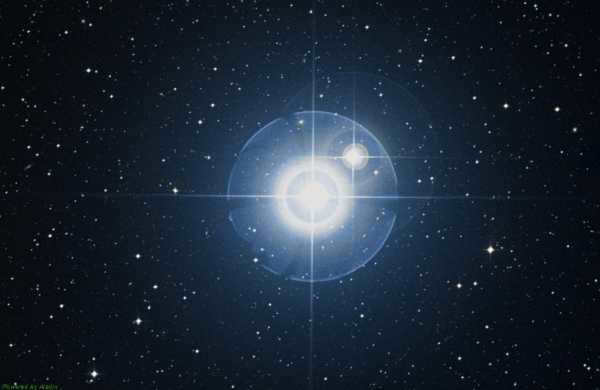
Alpha Libra is the second most luminous star in the constellation. With the help of small binoculars, anyone can observe that the primary star (a scorching blue star with a brightness of 2.75 magnitudes) has a companion, a yellowish star with a brightness of 5.15 magnitudes. Despite their comparable movements, the two stars are separated by a considerable distance (approximately 5 arc minutes), which leads to uncertainties among astronomers regarding their physical connection.
If we measure the distance between the two elements of the system in terms of astronomical units, it amounts to 5.5 thousand. As a result, the period of rotation of the stars in relation to each other is two hundred thousand years. Interestingly enough, even the most luminous element of the system itself is a binary star, but the gap between them is so minuscule that it is impossible to perceive. It is worth noting that Alpha Libra is in close proximity to the celestial ecliptic, thus allowing for the potential observation of the star’s occultation by planets or the Moon. In the year 2052, we will have the opportunity to witness the planetary occultation of the star Zuben Elgenuby by the planet Mercury.
The second “claw” of Scorpio within the mentioned constellation
The historical northern claw of Scorpio within this constellation is known as Beta Libra. In Arabic, it is translated as Zuben el Shemali. However, the star is also referred to by its Latin name, Kiffa Borealis, which signifies “northern bowl” and aligns more closely with the constellation’s name.
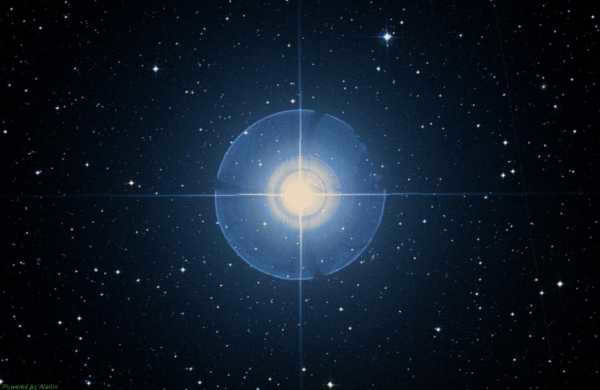
Beta Libra is a star that shines with a blue and pre-white hot glow. It can be found on the main sequence of stellar evolution and is classified as a B8 star. The surface temperature of Beta Libra is estimated to be around 12,000 Kelvin. When observed without any aid, this celestial body appears as a green luminous point in the night sky.
Due to its exceptionally high temperature and simple spectrum, Beta Libra serves as an ideal object for studying the interstellar gas that lies between the Sun and itself.
It appears that within the constellation Libra, there are a total of three claws
In an unexpected twist, Libra is equipped with an additional claw, which is once again attributed to Scorpio. Known as Gamma Libra or Zuben el Aqrab in Arabic, this celestial body symbolizes the scorpion’s appendage. Notably, this star serves as the second multiple system within the Libra constellation.
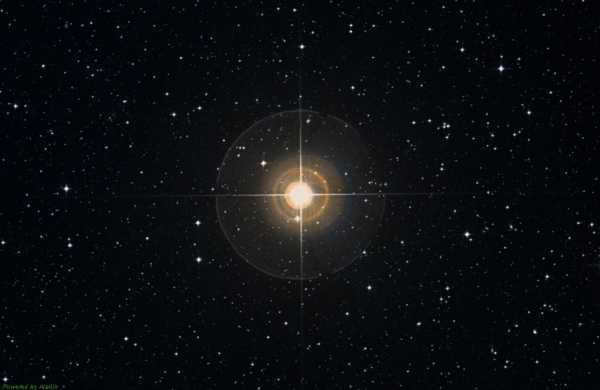
Gamma Libra appears like a typical orange giant that belongs to the K0III spectral class. This particular luminary has an effective temperature of 4822 Kelvin on its surface. Its diameter measures 14 times that of the Sun. With an apparent magnitude of 3.93, it is 71 times brighter than our Sun.
The metallicity of Libra’s scale is approximately half of that of the Sun. The mass of this star is estimated to be 2.5 times that of the Sun. Scientists believe that the age of this star is around four billion years. Additionally, a possible companion star has been discovered in close proximity to this system, less than 0.1 arc second away from the primary star. This companion star has an apparent magnitude of 4.2 and is classified as a G8III star. It is possible that this companion star is also a binary system.
Delta Libra: The Eclipsing Luminary of the Constellation
One fascinating celestial object within the Libra constellation is Delta Libra. Also known as Zuben Elacribi, this luminary’s alternate name hints at its previous association with the nearby Scorpius constellation. Delta Libra is not only a multiple system but also a prominent example of Algol-type eclipsing variable stars.
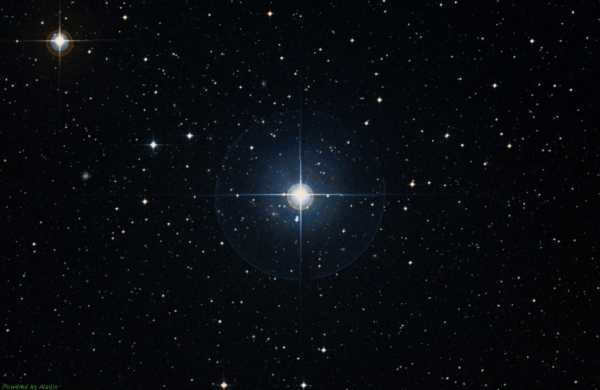
When examining the list of variable stars, we can observe that the primary element of this system is a radiant star, classified as an A0 star based on its spectrum. The secondary element is an orange subgiant. The gap between the centers of these two luminous bodies in this system is nearly 9 million kilometers, and the time it takes for them to complete one orbit is approximately 2.5 days.
The pulsating star Libra
The constellation Libra contains an intriguing feature known as sigma. Throughout history, it has been identified by various names including Cornu, Bahrium, and the well-known Zuben Hakrabi. Interestingly, it was originally considered a part of the Scorpius constellation due to its proximity. However, in the 19th century, astronomer Gould officially recognized it as part of Libra and designated it as Sigma.
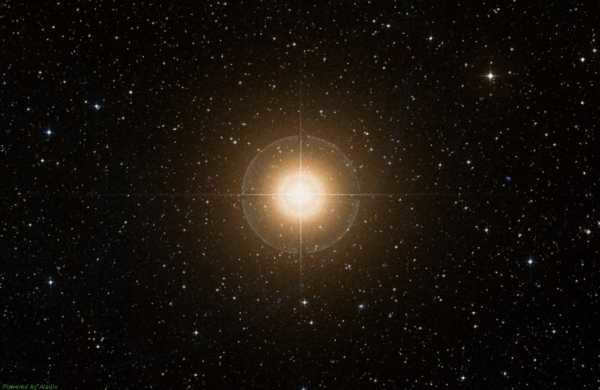
Sigma Libra, a variable pulsating star with a magnitude of about 3.29 meters, is believed to be a red giant due to its spectral class M3. Located 290 light-years away from Earth, this star has an average brightness 1900 times higher and a radius 110 times larger than that of the Sun. With a surface temperature of approximately 3600 K, Sigma Libra emits a reddish glow.
What is fascinating about Libra sigma is that it is a pulsating star. As a result, its brightness undergoes fluctuations every 20 days, changing by an average of 0.26 magnitudes. This particular star has reached the final phase of its stellar life cycle. Extensive research has been conducted on this celestial object, which has confirmed the absence of any undiscovered satellites, chemical anomalies, or dust disks in its vicinity. In the near future, this star will expand in size, shed its outer layers, and reveal its carbon and oxygen core, ultimately transforming into a white dwarf.
Main features
The constellation of Libra is the seventh largest in the zodiac and is ranked 29th among all others. It is located predominantly in the southern hemisphere and is intersected by the lines of the celestial equator and ecliptic. It is interesting to note that most of Libra lies above the line of the ecliptic, but below the equator, making it part of the southern sky.
Libra is surrounded by the constellations listed below:
It’s crucial to understand that ancient astronomers from different civilizations had slightly different methods of identifying constellations. There were specific observations made in subtropical and tropical regions that had their own unique characteristics. For instance, if someone was in Athens and observed the stars, Libra would pass near the zenith and the ecliptic line would appear almost perpendicular to the horizon. From this perspective, the constellation pattern would look slightly different, resembling a merry-go-round or a swing.
Throughout history, there have been alterations in the interpretations of the zodiac signs. During Ptolemy’s era, they were all depicted as animated, but Libra did not have its own separate constellation and was instead divided equally between Scorpio and Virgo.
Ptolemy held a unique perspective on the origins of Libra. He referred to them as the asterism “claws of the scorpion,” while also acknowledging their existence. During that era, the Roman Empire held a deep reverence for the goddess of Justice, who was often depicted holding scales in her hands. It is possible that the astronomer chose to emphasize this connection.
Galaxies and Star Clusters in the Constellation of Libra
Aside from stars, the constellation of Libra is also home to other celestial objects such as galaxies and star clusters. Although they may appear faint, these objects can still be observed using a decent amateur telescope.
NGC 5792
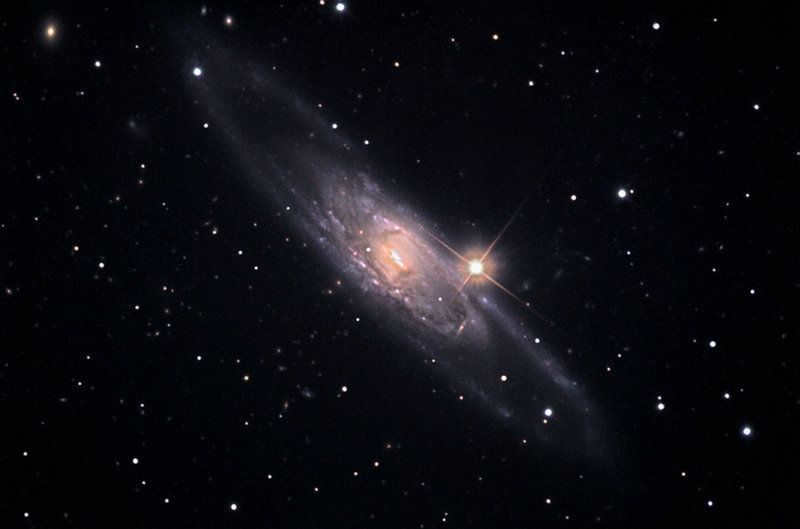
The spiral galaxy NGC 5792, located in the constellation Libra,
possesses a unique feature – a junction. This fascinating celestial object is positioned at an angle, giving it a striking resemblance to the renowned Andromeda galaxy M31.
Situated at a staggering distance of 83 million light years away from our planet, NGC 5792 showcases an apparent brightness of 11.3 meters and a surface brightness of 13.8 meters. To fully appreciate and explore its captivating attributes, it is recommended to utilize a telescope with an aperture of 200 mm or larger.
NGC 5890: A Unique Celestial Entity.
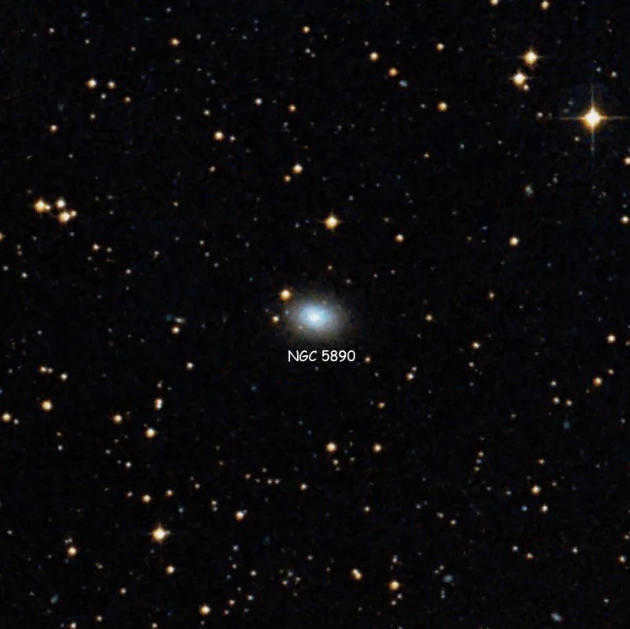
Located in the constellation Libra, NGC 5890 is a lenticular galaxy.
This particular galaxy has an apparent brightness of 12.8 m and a surface brightness of 13.0 m. It can be observed using large amateur telescopes, but may not be visible with smaller ones.
NGC 5885: A Unique Celestial Object.
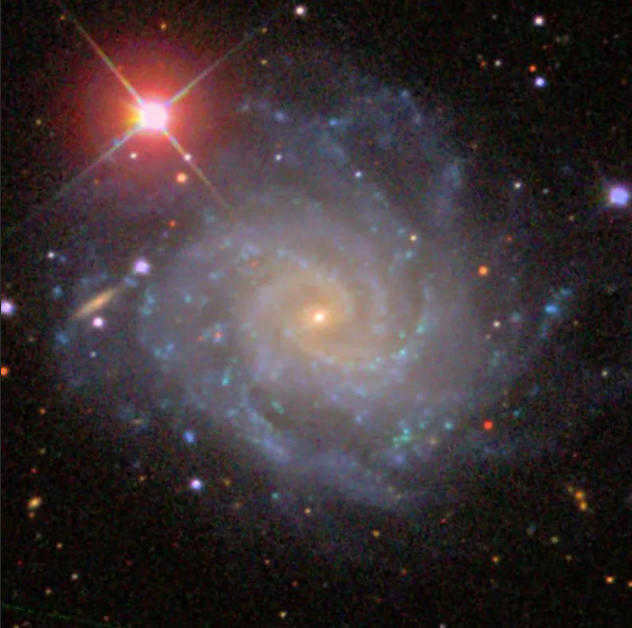
Spiral galaxy NGC 5885 is situated in the constellation Libra.
NGC 5885 is a spiral galaxy that poses challenges for observation due to its apparent brightness of 11.8 meters and surface brightness of 14.2 meters. It can only be observed by those who own powerful telescopes.
The location of the constellation Libra in the night sky
The constellation Libra can be found between Virgo and Scorpio in the night sky. It is most visible during the spring season when it rises high above the horizon. Its position is easily identified by the bright stars of the neighboring constellations, Spike and Antares, which appear reddish in the southern part of the sky. The best time to view Libra is during the spring and summer months.
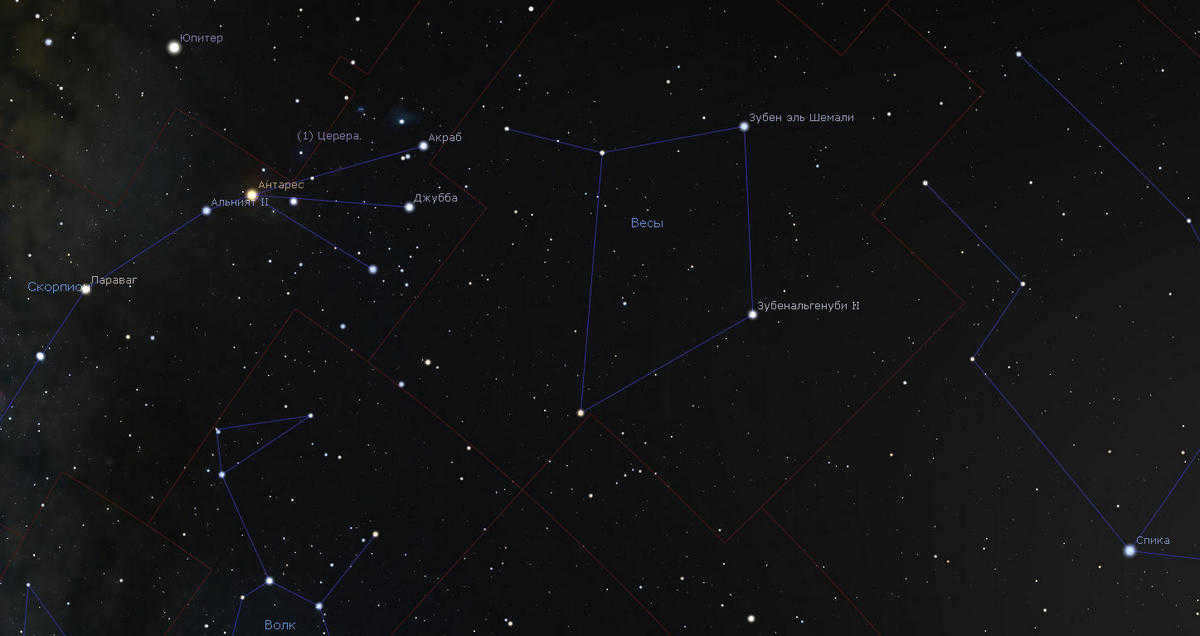
The Origins of the Libra Constellation
There exists an ancient Greek legend surrounding the formation of the constellation Libra in the night sky. According to this tale, the Greek people believed that Zeus, the ruler of the gods in Greek mythology, established order and law on Earth. However, even Zeus required assistance, and so he bestowed upon Themis a magical scale by which she could weigh the good and bad deeds of individuals. The outcome of this weighing determined the future destiny of each person. Themis, known for her benevolence, did not punish those who committed wicked deeds, but rather rewarded those who performed virtuous acts. In recognition of her generosity, Zeus chose to immortalize the goddess Themis by placing an image of her scales among the stars.
Bright celestial bodies
The origin of various planets and other celestial objects remains a mysterious phenomenon. A comprehensive examination of this domain only became possible with the advent of advanced telescopes. These groundbreaking instruments have allowed astronomers to identify several luminous stars located within the Libra constellation. Among the most prominent of these stars are:
- Zuben Elshemali, a blue-white dwarf with a surface temperature of approximately 11,000 Kelvin. Subtle variations in its behavior suggest the presence of an unseen companion.
- Zuben Elgenuby, a multiple system with each component displaying unique characteristics. One notable component, Alpha 2 Libra, possesses a yellowish companion and boasts a surface temperature of around 8500 Kelvin.
- Zubenalgubi, a pulsating variable star also known as the red giant M4III. Astronomers have determined that it is currently in the final stages of its evolution.
The constellation also harbors a cluster of stars and a celestial galaxy. If one desires, they can be observed using a telescope suitable for amateur astronomers. It is possible that the initial search may yield negative results. However, there is no need to fret, as with practice one will gain the ability to discern the location and nature of each star.
Constellations are diverse in nature. They can be observed throughout the year, although their visibility may fluctuate at different times.
Despite containing numerous stars, the constellation lacks any objects from Messier’s catalog. However, this does not imply a lack of intriguing elements.
One example is the May Libraids meteor shower, which is actually a collection of meteor showers.
Moreover, astronomers have identified spiral galaxies such as NGC 5792 and 5885. Furthermore, there is NGC 5890, which has a lens-shaped structure with a lintel.
Additionally, scientists have uncovered the sizable globular cluster NGC 5897, boasting a magnitude of 9.
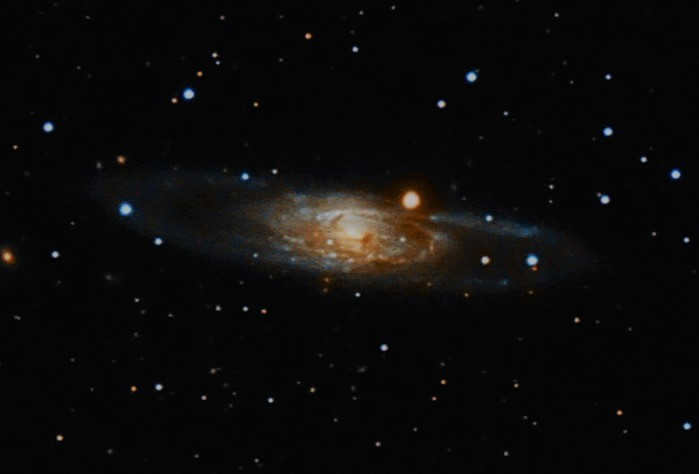
NGC 5792
The stars composing the constellation Libra
Alpha Libra is not the most luminous star in the constellation; it actually takes second place. It is a binary system made up of a blue giant and its companion. Interestingly, it goes by two names simultaneously. The first one is Zuben el Genubi, which translates to “southern claw.” This name was given to the star when it was a part of the constellation Scorpius. However, it is still being used today. The second name, Kiffa Australis, means “southern bowl” or “scales.”
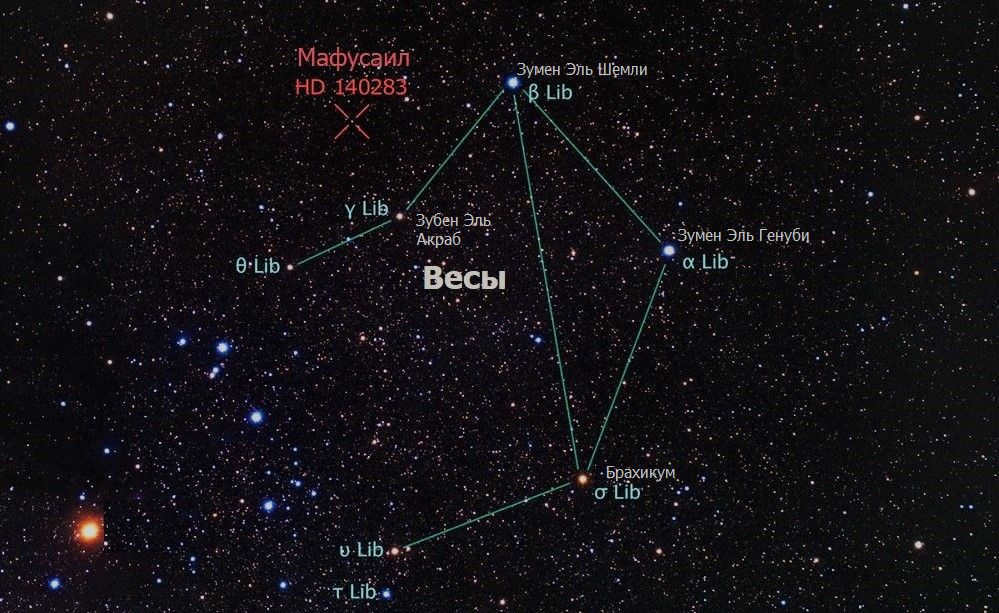
The constellation of Libra
The most prominent star in the Libra constellation is Beta Libra. Similar to Alpha, it is known by two names: Zuben el Shemali, meaning “northern claw,” and Kiffa Borealis, meaning “northern bowl.” This star appears as a blue-white color and gives off a greenish hue when observed with the naked eye.
There are several stars in the Libra constellation that have multiple names. For instance, Sigma is known as Brachium, Cornu, and Zuben-Hakrabi.
However, Ipsilon Libra is a star that hasn’t been assigned a distinct name. It is designated as HD 139063 and is an orange giant star that is over three billion years old.
Tau Libra also does not have its own individual name, so it shares one with Alpha. It is referred to as Derakrab Australis, which translates to “southern claw” in Arabic.
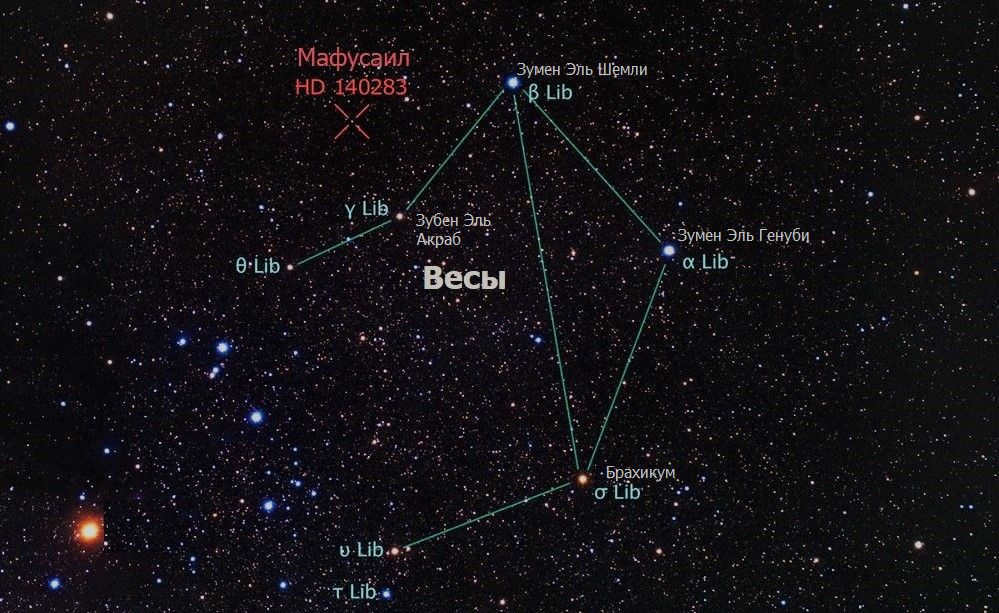
HD 140283, also known as Methuselah, is located in the constellation of Libra.
The constellation Libra is named after the scales and its areal is known as Zuben el Aqrab. Another star in Libra, Gamma, is also called the “claw” which refers to Scorpius. Some researchers believe that Gamma is a double or even triple star, but there is still disagreement on this matter.
Agriculture was the primary occupation of the ancient Egyptians. In the autumn, they would commence all the necessary harvesting activities. During this time, the hardworking Egyptians would focus on gathering and grinding grain. Once the harvest was complete, all the grain would need to be measured. This weighing would always take place on a day when the duration of daylight and darkness were exactly equal. We refer to this day as the “autumnal equinox,” which typically occurs on September 23rd. It is on this precise day that the Sun moves into the constellation Libra.
It is quite challenging to locate the constellation Libra in the vast expanse of the starry sky. This is primarily due to the limited number of prominent stars that can be used as reference points for identification. However, it is not impossible to find it. Astronomers recommend beginning the observation of the Libra constellation in the months of April and May. Libra is particularly recognizable in the central regions of Russia and its southern parts. An excellent guide in the exploration of the Libra constellation is the neighboring constellation Scorpio. Once Scorpio has been located, one can easily extend the search to its distinctive claws, which will lead to the discovery of Libra.
Unusual items in the Libra constellation
The celestial body Gliese 570
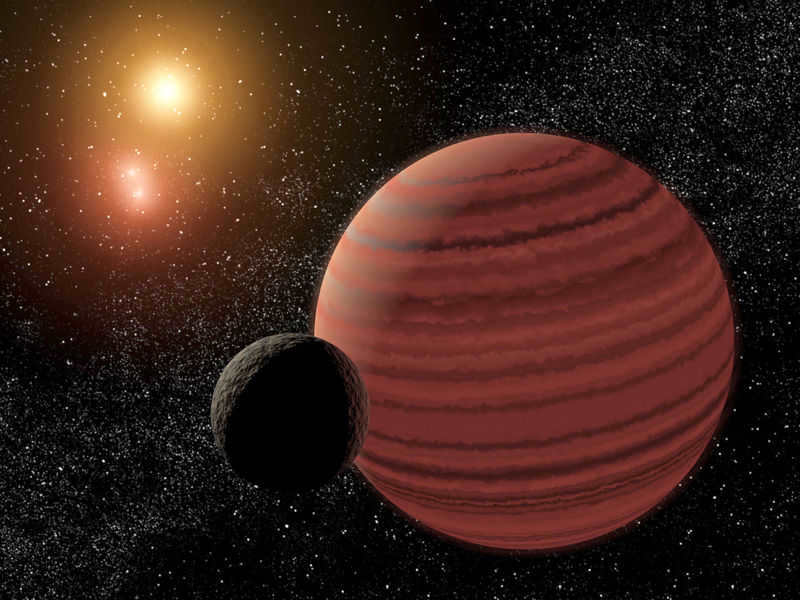
The Gliese 570 system depicted by an artist
Regrettably, individuals with an interest in astronomy will not discover exceptionally luminous galaxies within this constellation. Nevertheless, there are several remarkable entities within the constellation. One such entity is the Gliese 570 star, which is the nearest quadruple system to our Sun. It consists of four dwarf stars: an orange one, a brown one, and two red ones. Gliese 570 is situated 19 light-years away from our Sun.
Historical Background of the Most “Harmonious” Constellation
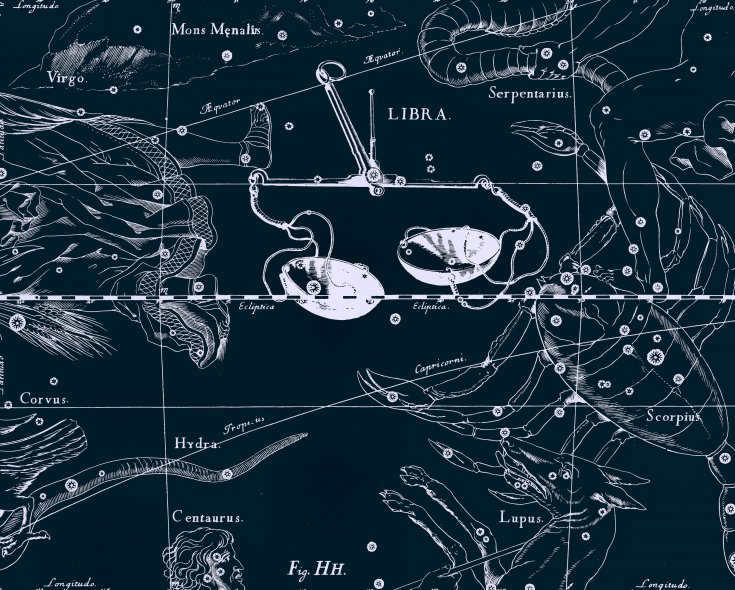
The constellation Libra was originally part of the Scorpius constellation many thousands of years ago. However, in the 2nd century BC, Libra became its own independent constellation. There are even earlier mentions of Libra in the poems of Arat Soli. Interestingly, in the 1st century AD, the poet Virgil proposed replacing Libra with a new constellation dedicated to Emperor Augustus, suggesting a slight reduction in the Scorpius constellation.
When the constellation Libra was first formed, it was often referred to as the “Claws”. This led to attempts to associate it with Scorpio. During this time, the stars in this group were sometimes represented as an asterism and sometimes as a constellation. In the work of Ptolemy, for example, it is mentioned as a constellation, specifically the “Claw” constellation. Interestingly, during the same period, the Zodiacal “Claws” were called Libra. However, by the first century B.C., the current name became more commonly used. As mentioned earlier, this constellation is unique in the sky as it is the only inanimate object, most likely due to its late formation.

There are two myths surrounding the constellation Libra. The first one originates from ancient Greece. The locals believed that the goddess Astrea, who was the daughter of Zeus and Themis, was associated with this constellation. Astrea had the ability to test people and expose liars and criminals. In order to remain impartial, she would blindfold herself and use scales to weigh the actions of individuals. After conducting these evaluations, Zeus would then administer severe punishments to those who were found guilty. As a token of appreciation for her hard work, the God of Thunder decided to create a celestial scale in her honor.
According to an alternate myth, Themis, the offspring of Uranus and Gaea, became Zeus’ second spouse. She bore the goddesses Clotho, Lahesis, and Atropos. Olympus adhered to the rule of law thanks to her. Themis was depicted wearing a blindfold, symbolizing impartiality. In one hand, she held a sword to punish wrongdoers, and in the other hand, she held scales as a symbol of precision and equilibrium. As a result, by Zeus’ command, scales appeared in the sky so that people could gaze upon the constellation and remember the importance of upholding justice. During ancient times in Rome, Emperor Augustus reigned for a period. He was remembered by the people as a just ruler who prioritized the well-being of the population. His decisions were just, and he always upheld the law. In recognition of his contributions, his name was immortalized as a constellation.
In ancient times, the arrival of Libra in the sky marked the start of the initial harvest. This symbol was often interpreted literally, as the harvest needed to be accurately weighed. Today, Libra is one of the zodiac signs, unique among them as the only inanimate object.
Fascinating elements within the Libra constellation
The celestial body known as Gliese 570
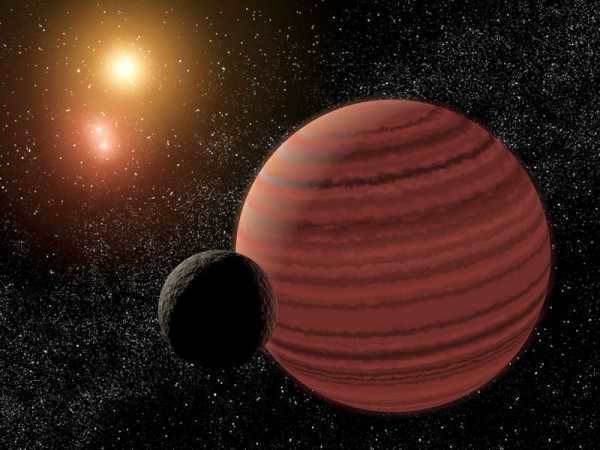
An artistic perspective on the Gliese 570 system
Regrettably, those with a passion for astronomy won’t discover any exceptionally luminous galaxies in this particular constellation. Nevertheless, there are several noteworthy entities within this constellation. One such example is the Gliese 570 star, which happens to be the nearest quadruple system to our own Sun. It is comprised of four dwarf stars: an orange one, a brown one, and two red ones. Gliese 570 is positioned at a distance of 19 light-years from our Sun.
The internal organization of this system is rather intricate. As a result, its two elements, known as B and C, orbit around a shared center of mass. The distance between the stars is relatively close – approximately 0.79 astronomical units, leading to a rotational period of 309 days. The primary component, the star Gliese 570A, is positioned a significant 190 astronomical units away from the pair. Consequently, the orbital period of the B and C pair in relation to star A amounts to about 2130 years. All constituents of this quaternary system, including the least significant (dim and small) component D, are part of the aging stars within the galactic disk.
The constellations Libra and its stars
Although Alpha Libra is not the brightest star in the constellation, it holds the second position. This star is actually a double system, consisting of a blue giant and its companion. Interestingly, it goes by two names simultaneously. The first name is Zuben el Genubi, which translates to “southern claw.” This name was given to the star when it was considered part of the Scorpius constellation. However, it continues to be recognized by this name till today. The second name, Kiffa Australis, means “southern bowl” or “scales.”
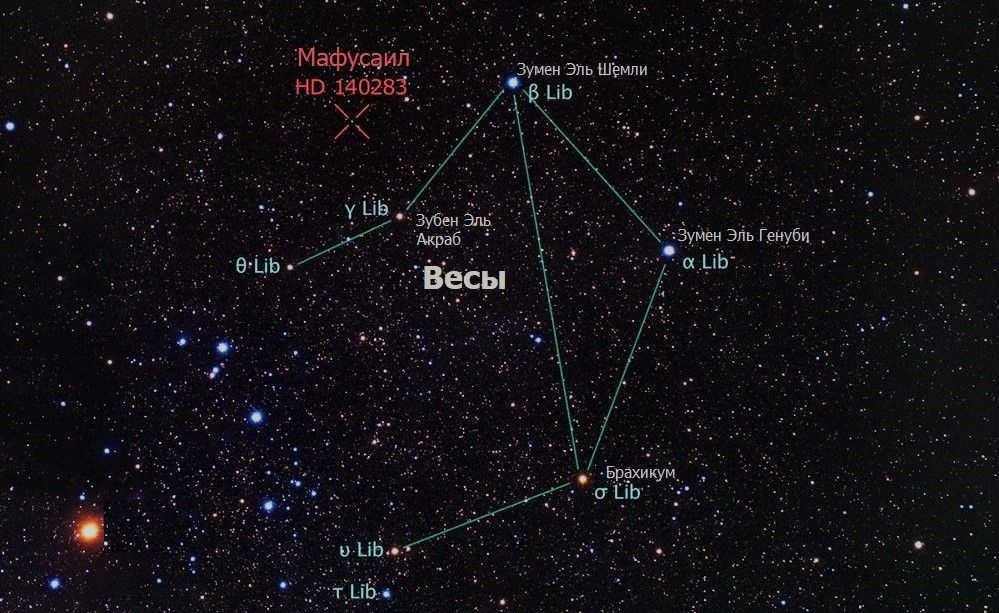
The constellation Libra
The most prominent star in the constellation is Beta Librae. Similar to Alpha, it goes by two names, “Zuben el Shemali” and “Kiffa Borealis,” which mean “northern paw” and “northern bowl” respectively. This blue-white star appears to have a green tint when observed with the naked eye.
There are several stars in the Libra constellation that have multiple names. For instance, Sigma is known as Brachium, Cornu, and Zuben-Hakrabi.
However, Ipsilon Librae does not have a distinct name and is identified as HD 139063. It is an orange giant that is over three billion years old.
Tau Librae also lacks its own unique name and shares one with Alpha. It is referred to as Derakrab Australis, which translates to “southern claw” in Arabic.
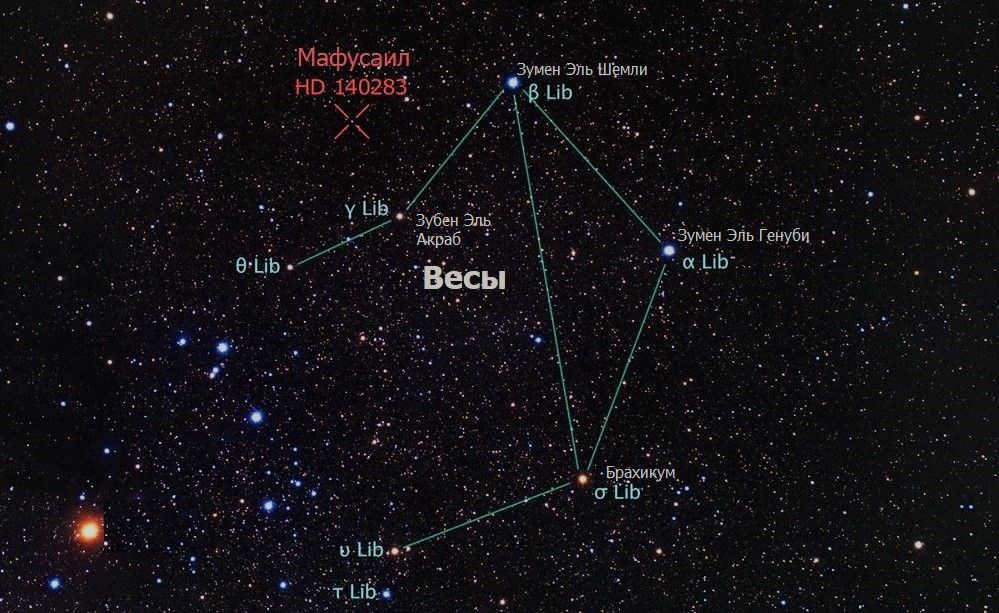
HD 140283 (Methuselah) can be found in the constellation of Libra
The constellation of Libra is home to Zuben el Aqrab. This particular star, Gamma, is one of several in the constellation that has the word “claw” in its name, which is a reference to Scorpius. There is some debate among researchers as to whether Gamma is a double or even triple star.
Main Features
Libra is the seventh largest constellation in the zodiac, ranking 29th overall and having 10 stars in the southern hemisphere. It is characterized by its position along the celestial equator and the ecliptic. Notably, most of Libra is situated above the ecliptic line but below the equator, placing it in the southern region of the sky.
Libra is bordered by the following constellations:
From October 31 to November 22, Libra is traversed by the Sun. It is visible from December to September, but its best viewing time is in May, when it reaches its highest point at midnight. In the celestial sky, this constellation is easily observable to the naked eye, and with a small telescope, one can observe it in greater detail. The constellation of Libra resembles a triangle with dangling filaments. It is comprised of a total of 83 stars, with 7 of them being particularly bright: Zuben Elgenubi, Zuben Elshemali, Lib, υ Lib, τ Lib, γ Lib, and θ Lib.
Throughout history, perspectives on the zodiac signs have evolved. In the era of Ptolemy, they were all considered animated, but Libra did not have its own constellation and was instead divided between Scorpio and Virgo.
Ptolemy held a unique interpretation of the origin of Libra. He referred to them as the asterism “claws of the scorpion,” while also acknowledging them separately. During that time, the Roman Empire held great reverence for the goddess of Justice, who held the scales. It is possible that the astronomer chose to highlight this aspect in such a manner.
Did you know?
- There are a total of 83 stars in the constellation Libra, although only 6 of them have a brightness greater than the fourth magnitude, making it difficult to observe all of them.
- Originally, Libra was considered to be a part of the Scorpius constellation, representing its claws. However, in some sources, they were referred to as an asterism, and it wasn’t until later that Libra became recognized as its own independent constellation.
- It remains a mystery as to why Libra is the only “inanimate” constellation in the zodiac. It is believed that this is because it took a long time for Libra to be acknowledged as a standalone constellation.
Additional items
Libra comprises of 83 stars and no Messier objects. However, despite this, there are several fascinating features to note. One notable aspect is the presence of the May Librides, which is a cluster of meteor showers. Additionally, the constellation Libra is home to spiral and lenticular galaxies, as well as a globular cluster.
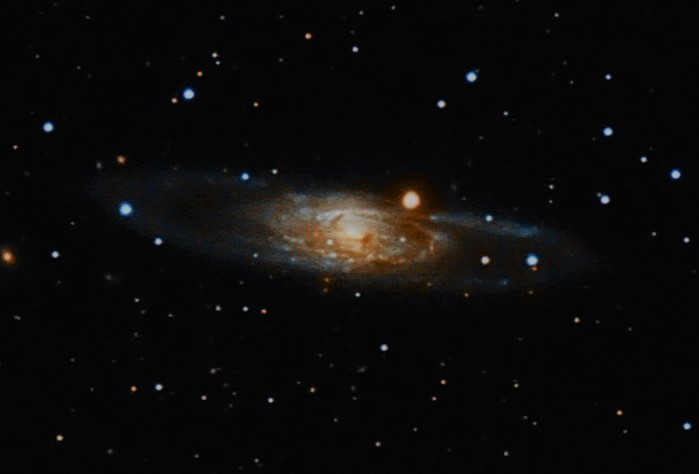
NGC 5792
The Origins of the Equilibrium Constellation
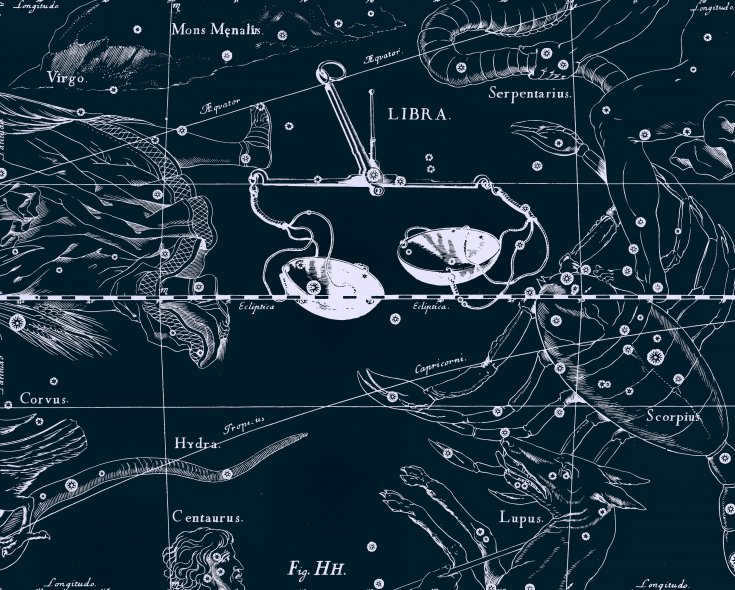
The constellation Libra, which was depicted by Jan Hevelius in his atlas of constellations, has an interesting history. Many thousands of years ago, the stars that now belong to Libra were actually part of a different constellation called Scorpius. However, in the 2nd century BC, Libra became its own independent constellation. There are even mentions of Libra in the poems of Aratus Soliloquy from a century earlier. In the 1st century AD, the poet Virgil proposed replacing the scales of Libra with a new constellation dedicated to Emperor Augustus, which would have slightly reduced the size of Scorpius. However, this proposal did not come to fruition.
When Libra was established as an independent constellation, it was often referred to as the “Claws”. Consequently, attempts were made to associate it with Scorpio. During that time, the stars in this group were sometimes depicted as an asterism and sometimes as individual constellations. For instance, in Ptolemy’s work, it is mentioned as a constellation, specifically as the “Claws”. Interestingly, during the same period, the zodiacal “Claws” were known as Libra. However, in the first century B.C., the current name, Libra, became widely accepted. As mentioned earlier, this zodiacal constellation is the only inanimate object in the sky, possibly due to its relatively late formation.
The position of the Libra constellation in the celestial sphere
Situated between Virgo and Scorpio, the Libra constellation can be found in the sky. To get the best view, it is recommended to observe it during the spring season when it reaches a higher position above the horizon. The nearby constellations of Spike and the reddish Antares serve as helpful guides in locating Libra in the southern part of the sky. For optimal visibility, spring and summer are the ideal seasons to observe this constellation.
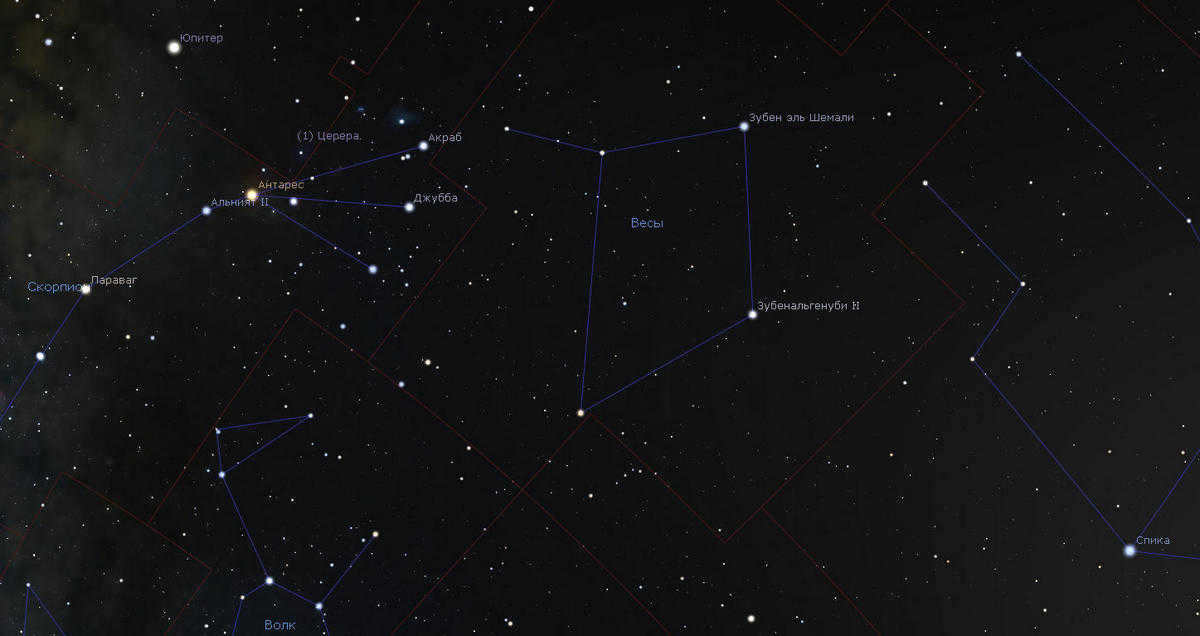
Main stars
The prominent stars in this region create a rectangular shape, which serves as the foundation for the Libra constellation.
Alpha is a binary star known as Zuben el Genoubi, while Beta is referred to as Zuben el Shemali. Interestingly, these significant celestial bodies are also known as the Southern and Northern Claws.
Gamma Zuben el Aqrab, Ypsilon, and Theta Libra are classified as orange giants.
The star Brachicum is identified as Sigma. It is worth noting that Brachicum is a pulsating object and represents a hand.
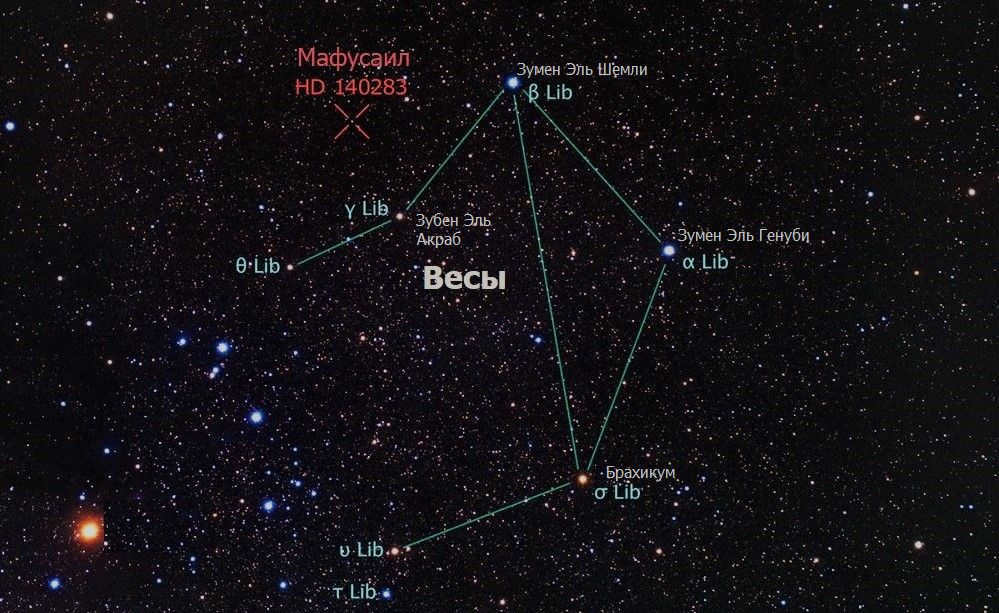
The Libra constellation
On the flip side, Tau and Delta are small stars. Both have a blue and white color.
Iota is a group of subgiants and small stars.
Other stars in the constellation include Gliese 570 and 581; 48; 23; 141937.
The Libra constellation is home to the oldest star in the universe. Its name is Methuselah (HD 140283).
However, there are no stars larger than the first magnitude.
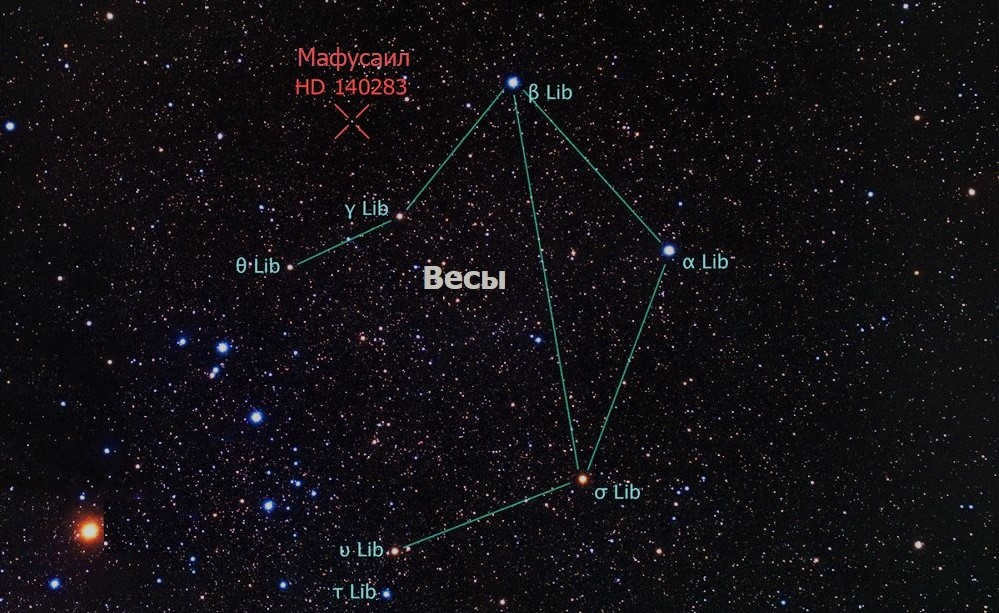
HD 140283 (Methuselah) in the constellation Libra
Bright stars
The origins of various planets and other celestial objects remain a mystery. The advent of powerful telescopes has allowed for a more detailed study of this field. Thanks to these advancements, several prominent stars have been identified in the Libra constellation. The most notable among them are:
- Zuben Elshemali, a blue-white dwarf with a surface temperature of approximately 11000 Kelvin. Minor fluctuations suggest the presence of an unseen satellite.
- Zuben Elgenuby, a multiple system with each component being significantly distanced. Alpha 2 Libra has a yellowish companion, and the surface temperature of this star is about 8500 Kelvin.
- Zubenalgubi, also known as the red giant M4III, is a pulsating variable star at the last stage of evolution.
The constellation also includes a star cluster and a galaxy that can be detected with an amateur telescope. It is possible that the search may yield negative results initially, but with experience, you will learn to identify different types of stars and their locations.
Constellations vary in their visibility throughout the year, so it’s important to consider the time of observation.
The multiple arrangement of the constellation under investigation
Since we are discussing the pincers of the constellation, it is now time to progress to the more prominent stars of Libra. Let us commence our examination with the initial star of Libra, known as alpha, which is also referred to as Zuben Elgenubi in Arabic. In translation, as you may have inferred, it signifies “southern claw.” The Latin rendition of the star’s name similarly encompasses the word southern, albeit in the form of a bowl, and is pronounced as Kiffa Australis.
Alpha Libra is the second most luminous celestial body in its constellation. This particular star is a binary system, and even with the aid of small binoculars, it is visible that the primary star (a scorching blue star with a magnitude of 2.75 meters) has a companion – a yellowish star with a magnitude of 5.15 meters. These two stars are separated by a considerable distance (approximately 5 angular minutes), so despite their comparable movements, astronomers still have reservations regarding their physical association.
If we measure the separation between the two elements of the system in terms of astronomical units, it amounts to 5.5 thousand. As a result, the stars’ rotational period with respect to each other is two hundred thousand years. Interestingly, even the primary component of the system itself is a binary star, although they are positioned so closely together that they cannot be resolved. It is worth mentioning that Alpha Libra is situated in close proximity to the celestial ecliptic, making it feasible to observe the occlusion of the star by planets or the Moon. In the year 2052, we will have the opportunity to witness the occlusion of the star Zuben Elgenuby by the planet Mercury.
Scorpius’ second “pincer” in the mentioned constellation
The historical northern pincer of Scorpio in this constellation is called Beta Libra. This Arabic name translates to Zuben el Shemali. However, the star also has the Latin name Kiffa Borealis, which means “northern bowl” and is more closely related to the constellation’s name.
Beta Libra is a blue and pre-white hot star. It belongs to the main sequence of stellar evolution and has a spectral class of B8. The surface temperature of Beta Libra is approximately 12,000 Kelvin. When observed with the naked eye, this star may appear as a green luminary in the night sky.
Due to its high temperature and unusually simple spectrum, this celestial body serves as an excellent tool for studying the interstellar gas between the Sun and Beta Libra.
There has been some variation observed in this celestial body by astronomers. As a result, it is probable that beta Libra currently possesses an unseen companion that occasionally outshines the primary star. Historical “astrologers” like Ptolemy documented that Beta Libra was significantly brighter than its neighboring star, Antares. The accuracy of this information and the reason behind the star’s subsequent decline in brightness remain a mystery to this day.
Surprisingly, thanks to our ancestors, Libra possesses an additional appendage, which is once again associated with Scorpio. Known as Zuben el Aqrab in Arabic, this celestial body is referred to as the “scorpion’s claw”. Gamma Libra is representative of the second multiple system within the Libra constellation.
Gamma Libra takes the form of a typical orange giant star classified as K0III. This luminous body possesses an effective surface temperature of 4822 Kelvin. With a diameter measuring 14 times that of the Sun, the star exhibits an apparent magnitude of 3.93 and shines 71 times brighter than our own stellar neighbor.
The metallicity level of Libra is approximately 50% lower than that of the Sun. In this instance, the star’s mass is equivalent to 2.5 times the mass of the Sun. Different calculations suggest that the star is around four billion years old. A potential nearby companion has been detected within this system, positioned less than 0.1 arc second away from the main star. This companion has a stellar magnitude of 4.2 meters and falls under the G8III spectrum classification. It is probable that this companion is also a binary star.
Delta Libra: A Fascinating Eclipsing Luminary in the Constellation
One intriguing object within the Libra constellation is Delta Libra, also known as Zuben Elacribi. This alternate name hints at its previous association with the neighboring Scorpius constellation, much like other components of Libra. Delta Libra is not only a multiple system, but it is also a brilliant example of an eclipsing variable star belonging to the Algol type.
Upon perusing the variable star catalog, one will discover that the primary component of this system is a blazing star classified as A0 based on its spectrum. Its secondary component, on the other hand, is an orange subgiant. The distance between the two luminaries of this system is nearly 9 million kilometers, and the orbital period spans approximately 2.5 days.
In 2001, reports surfaced suggesting the possible existence of a third component in the binary system, in the form of a long-standing satellite. It was hypothesized that this satellite belonged to the spectral class G9 and had a mass similar to that of the sun. The estimated orbital period of this third component was around 2.76 years. After a period of 5 years, in 2006, this information was fully validated. It was indeed found that this component is positioned at a distance of 4 astronomical units from the two stars.
There is a fascinating component within the constellation: the sigma of Libra. Throughout history, it has been known by various names such as Cornu, Bahrium, or the more familiar Zuben Hakrabi. Interestingly, it was originally considered a part of the Scorpius constellation due to its proximity. However, it was so distant from its native constellation and so near the bright stars of Libra that in the 19th century, astronomer Gould relocated it to Libra and designated it as Sigma.
Sigma Libra is a pulsating variable star with a magnitude of approximately 3.29 meters. With its spectral class M3, it is highly likely to be a red giant. This star is situated 290 light-years away from our planet. Its brightness is roughly 1900 times greater, and its radius is about 110 times larger than that of the sun. The surface temperature of this star, with its reddish hue, is estimated to be around 3600 K.
It is intriguing to note that Libra sigma is a pulsating star. As a result, its luminosity fluctuates every 20 days, with an average change of 0.26 magnitudes. This celestial object is currently in the late stage of its stellar evolution. Extensive research has been conducted on all aspects of this star, and it has been conclusively determined that Sigma does not possess any unknown satellites, chemical abnormalities, or circumstellar dust disks. In the near future, the star will undergo expansion, shedding its outer layers and revealing its carbon and oxygen core, ultimately transforming into a white dwarf.
What is the appearance of the constellation Libra?
The constellation Libra bears little resemblance to the household object known as Libra. It takes the form of a triangle, with threads appearing to descend from its base. One of these threads, located on the right side, terminates with a green star. This star is unique in that it possesses a greenish hue that can be observed in the night sky without the aid of a telescope. Modern astronomers do not devote much attention to the study and observation of the constellation Libra. The absence of bright stars that exhibit notable changes of interest to scientists is the main reason for this lack of interest. Nevertheless, the constellation Libra remains captivating due to its origins and is highly regarded for its historical significance.
Legend
In the ancient times of Greece, the celestial location known as “Chelae” – “claws” was associated with the constellation Scorpius, specifically its claws. The concept of balance became connected with this constellation during the Roman era in the first century BC, supposedly when the Moon transitioned into Libra during the founding of Rome. This is why the constellation was venerated as a period when the seasons were in equilibrium and daytime was equal to nighttime. The reason for this belief is that the Sun was positioned at the autumnal equinox in Libra until the year 729, after which it shifted to Virgo. In the year 2439, it will move into Leo.
However, the bond with Scorpio endured. This is evidenced by the presence of the constellation’s first and most prominent star – Beta Librae, which is derived from the Arabic phrase “southern claw”.
Myths surrounding the formation of the Libra constellation.
There is a different myth surrounding the appearance of the constellation Libra in the celestial sphere. This particular myth originated in ancient Greece. According to Greek mythology, it was believed that Zeus, the leader of the Greek pantheon, established order and law on Earth. However, Zeus required assistance in maintaining this balance, and thus bestowed upon Themis a magical scale. With this scale, Themis had the ability to weigh the good and bad deeds of individuals, ultimately determining their future destiny. Despite the potential for punishment, Themis exemplified kindness and chose to reward those who performed good deeds instead. In recognition of her benevolence, Zeus decided to immortalize the memory of the goddess Themis by placing an image of her scales in the sky.
Myth of the constellation Libra in ancient Egypt
Agriculture was the primary occupation of the ancient Egyptians. During the autumn season, they dedicated themselves to the laborious tasks of harvesting and grinding grain. As the harvest came to a close, it was crucial to weigh all the grain accurately. This weighing process took place on a day when the duration of daylight and darkness were equal, known as the “autumnal equinox,” which typically occurs on September 23. It is on this very day that the Sun aligns with the constellation Libra.
Locating the Libra constellation in the night sky can be quite challenging. This is due to the fact that the constellation lacks prominent stars that would make it easily identifiable. However, it is still possible to try and locate it. Astronomers recommend beginning observations of the constellation in April or May. Libra is most recognized in the central region of Russia and its southern parts. Scorpio can serve as a helpful guide in studying the Libra constellation. By locating the Scorpius constellation first, one can then proceed to follow its claws and find Libra.
Attributed to Themis, Demeter, or Nemesis, the constellation Virgo is said to be the closest zodiacal constellation to Virgo.
Furthermore, Virgo has been erroneously identified as Persephone, while the constellation Libra has been associated with the chariot of Hades, which he used to abduct her and take her to his domain – the dark underworld of death.
Some even argue that it is not scales at all, but rather an Egyptian altar. These myths certainly vary!
Galaxies and Clusters in the Constellation of Libra
Aside from stars, the constellation of Libra is also home to other celestial objects such as galaxies and star clusters. However, these objects are relatively faint and can only be observed using a powerful amateur telescope.
NGC 5792
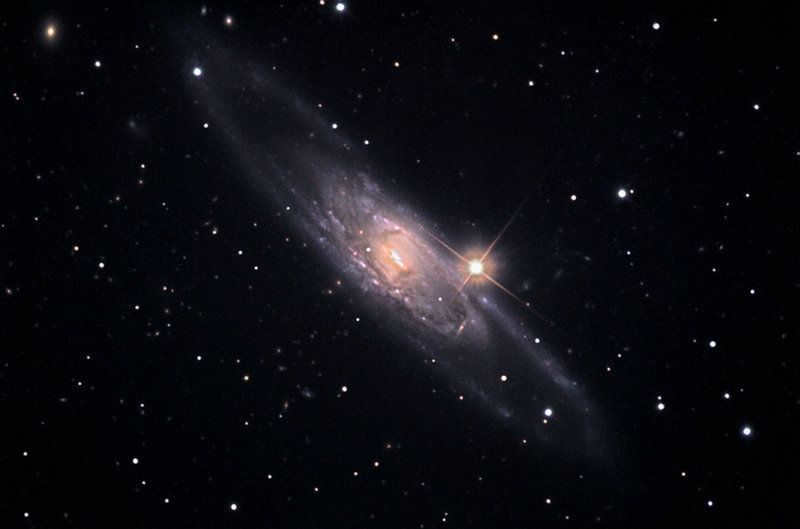
The galaxy NGC 5792 can be found in the Libra constellation.
This spiral galaxy features a unique junction, giving it a distinctive appearance reminiscent of the well-known Andromeda galaxy M31.
Located approximately 83 million light years away from Earth, NGC 5792 has an apparent brightness of 11.3 meters and a surface brightness of 13.8 meters. To observe it in detail, it is recommended to use a telescope with an aperture of 200 mm or larger.
NGC 5890: A Glimpse into the Cosmos.
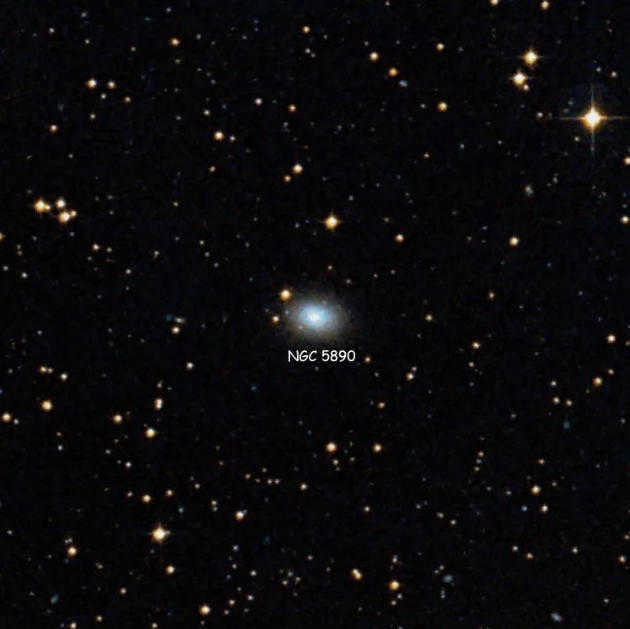
The lenticular galaxy NGC 5890 located in the constellation Libra is a unique celestial object.
With its apparent brightness measuring 12.8 m and surface brightness at 13.0 m, NGC 5890 is a captivating sight for astronomers.
While it may be visible with large amateur telescopes, smaller ones may not offer enough power to observe this galaxy.
Another remarkable galaxy, NGC 5885, deserves attention as well.
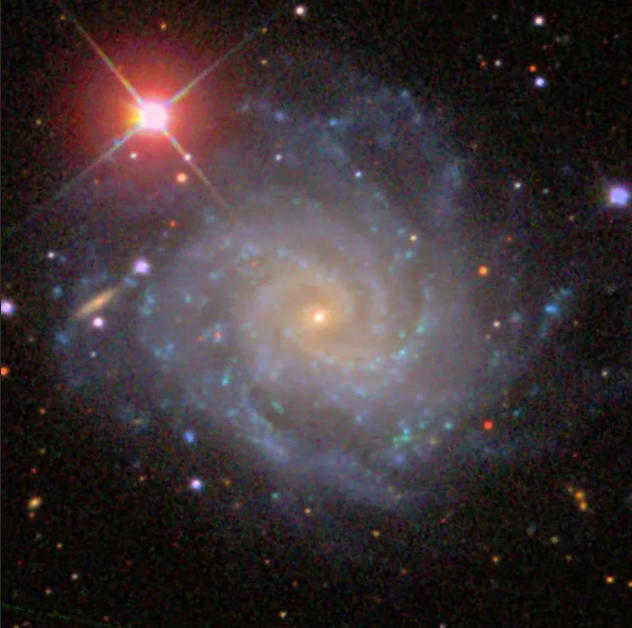
This is NGC 5885, a spiral galaxy located in the constellation Libra.
NGC 5885 has an apparent magnitude of 11.8 and a surface brightness of 14.2, making it a challenging target for observation and requiring a powerful telescope.
The most dazzling stars in the Libra constellation
In the Libra constellation, there are three stars that have known planets. The most brilliant star in this constellation is Zuben El Shemali, which has an apparent magnitude of 2.61. In May, there is a meteor shower associated with the Libra constellation called Librid.
Zuben El Shemali or β Libra
Beta Libra, also known as Zuben El Shemali, holds the title of the brightest star in the Libra constellation. It has a stellar magnitude of 2.61 and is approximately 185 light-years away from our solar system.
Zuben Elshemali is classified as a B8 V star, indicating that it is a blue-white dwarf. Beta Libra rotates at an incredibly high speed, with an expected velocity of 250 km/s. This star has a radius 4.9 times that of the Sun and shines about 130 times brighter than our Sun.
Beta Libra is categorized as a solitary star, but exhibits slight regular variations in luminosity (0.03 stellar magnitude), suggesting the existence of a companion star.
The celestial body Zuben Elgenuby or α of Libra
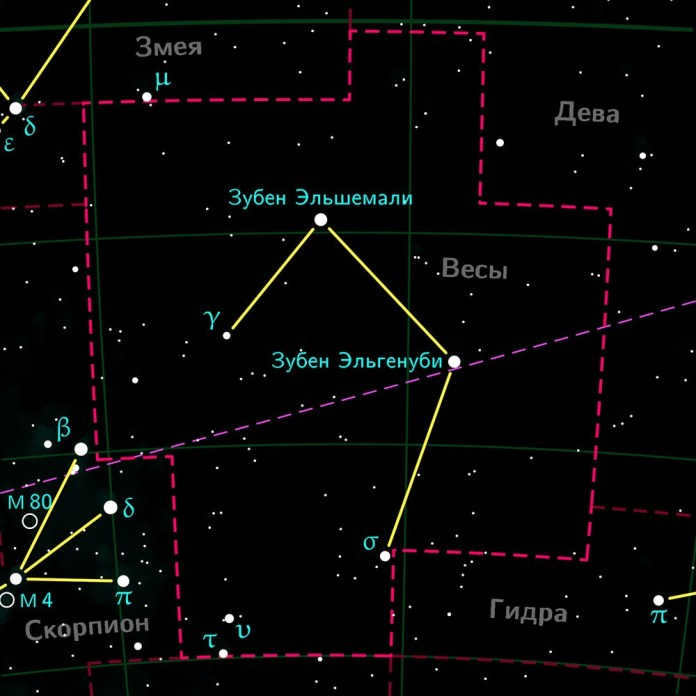
The constellation Libra contains the star Alpha Libra, which is the second brightest star in the constellation. This star is part of a multistellar system that consists of two bright components, forming a double star. They originated from a common source approximately 200 million years ago.
Known as Zouben Elgenoubi, the name of Alpha Libra comes from the Arabic word الزبن الجنوبي, which translates to “southern claw”.
Alpha 1 Libra is one of the primary components of the system and has a visible magnitude of 5.153. It is a spectroscopic double system with an orbital period of 5870 days. The two components of Alpha 1 are separated by 10 units. This system has a stellar rating of F4 and an apparent magnitude of 5.153. It is located 74.9 light-years away from Earth.
The star Alpha 2 Libra has a magnitude of 2.741. It is a double system separated from Alpha 1 by about 5,400 astronomical units. With a classification of A3 and a magnitude of 2.741, it is located 75.8 light-years away from the Sun.
The star Zuben El Aqrab or σ Libra
The star Sigma Libra is a red giant with a classification of M3 / M4 III. It has an apparent magnitude of 3.29 and is situated 288 light-years from the Sun.
Sigma Libra was previously known as Gamma Scorpio, although it is quite distant from the boundary of the Scorpius constellation. It officially became Sigma Libra in the 19th century, a designation confirmed by the International Astronomical Union on July 31, 1930.
The celestial body Methuselah, also known as HD 140283
HD 140283, a celestial body that holds the distinction of being the oldest star ever discovered, is thought to have originated shortly after the colossal event known as the Big Bang.
This star, classified as a subgiant with an extremely low concentration of metals, primarily consists of hydrogen and helium. Its iron content is less than 1% of the iron content found in our own Sun.
The Methuselah star has been estimated to be around 14.46 billion years old, slightly surpassing the estimated age of the universe, which is believed to be 13.77 billion years old. However, it is important to note that the age of the star does not necessarily conflict with the age of the universe, as these values are still subject to some level of uncertainty.
HD 140283 possesses a stellar magnitude of 7.223 and is located approximately 190.1 light-years away from our own planet.
Gliese 581, a red dwarf known as M3V, has an apparent magnitude that varies between 10.56 and 10.58. The star is situated 20.3 light-years away from our Solar System.
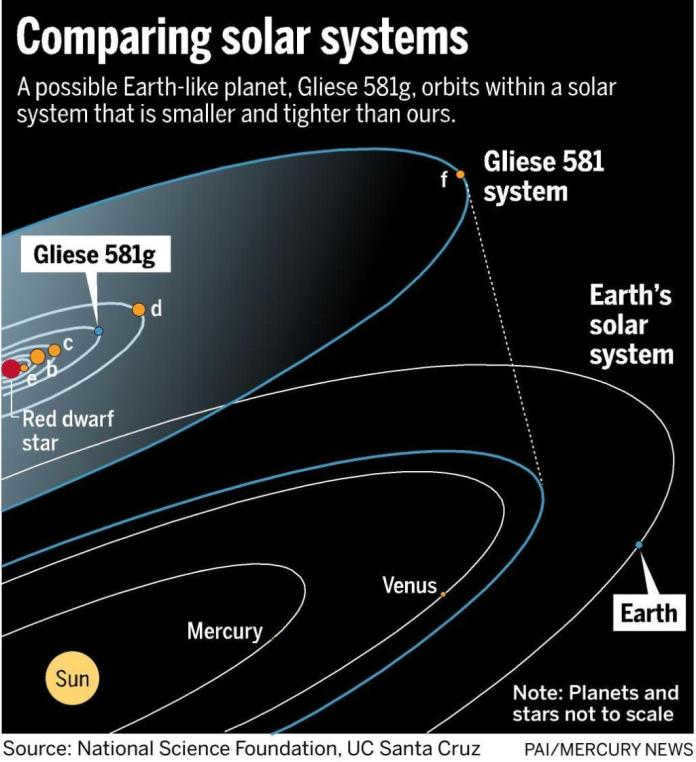
The 89th nearest star to the Sun, Gliese 581, has a mass that is only one third of the Sun’s and a visual brightness that is just 0.2% of the Sun’s. This star is located approximately two degrees north of the brightest star in the constellation Zuben el Shamali.
Gliese 581 is known to have a planetary system consisting of at least three, and potentially six, planets. The discovery of the first exoplanet in this system, Gliese 581 c, was made in April 2007. However, this planet is believed to be too hot to be within the habitable zone. Another planet in the system, Gliese 581 d, has not been confirmed but it is speculated to be either inside or just outside the habitable zone. Lastly, Gliese 581 e, discovered in April 2009, is the smallest planet in the system.
Deep space objects located in the Libra constellation
NGC 5792 Galaxy
The NGC 5792 galaxy is a spiral galaxy with a reticulated structure, situated in the Libra constellation. It has an apparent magnitude of 12.1 and is located at a distance of 83 million light-years from the Sun.
NGC 5890 Galaxy
The NGC 5890 galaxy is a lenticular galaxy found in the Libra constellation. It was first discovered by the American astronomer Ormond Stone in April 1785. This galaxy has a visible magnitude of 14.
The constellation of Libra has been known to humanity since ancient times. Unlike other zodiacal constellations, its name is not associated with living beings. So how did this measuring instrument end up in the sky?
Over two thousand years ago, the autumnal equinox point was located within the Libra constellation. As the Sun moved along the ecliptic throughout the year, it would reach this point on September 23, resulting in equal day and night durations. It is believed that this equality was the reason for naming this area of the sky in ancient times, giving rise to the constellation of Libra.
Ancient Egyptians associated the Libra constellation with their agricultural practices. After harvesting and threshing, the wheat was weighed before being stored in barns. It is likely that this weighing process took place when the Sun was in the area of the Libra constellation. Thus, the constellation of Libra served as a reminder of the importance of weighing the harvest.
The concept of outer space never fails to captivate individuals, causing many youngsters to view astronomy classes at school as something mystical and enchanting. One of the most captivating subjects within this field is the examination of stars. For instance, creating a presentation on the Libra constellation not only enables one to delve into the various legends associated with this celestial body, but also to explore its coordinates and other intriguing details. Students are even granted permission to enhance their work with a visually engaging slideshow.

A Brief History
There are two ancient tales surrounding the constellation Libra. The first originates from ancient Greece, where the locals revered the goddess Astrea – the daughter of Zeus and Themis. Astrea was known for her ability to test individuals, identifying those who were dishonest or criminal. To ensure impartiality, Astrea blindfolded herself and used a set of scales to weigh a person’s actions. After these tests, Zeus would severely punish any wrongdoers. In gratitude for her diligent work, Zeus decided to immortalize the scales in the night sky.

According to a different myth, Themis, who was the daughter of Uranus and Gaea, became the second wife of Zeus. She gave birth to the goddesses Clotho, Lahesis, and Atropos. With Themis’ influence, Olympus was governed by the principles of law and order. Themis was often depicted wearing a blindfold, which symbolized her impartiality. In one hand, she held a sword to punish wrongdoers, and in the other hand, she held scales, representing accuracy and balance. As a result, Zeus placed the constellation of Libra in the sky as a reminder to people of the importance of upholding justice.
During the reign of Emperor Augustus in ancient Rome, he was known for his just rule and care for the people. His decisions were always fair and he consistently upheld the law. As a token of appreciation, his name was immortalized through the creation of a constellation.
In ancient Egypt, the emergence of Libra symbolized the start of the first harvest. At times, this symbol was taken literally, as the harvest needed to be weighed. Today, it is included among the zodiac signs, standing out as the only inanimate object among them.
Main features
Libra is ranked as the seventh largest constellation in the zodiac. It holds the 29th position among all the constellations, and in the Southern Hemisphere, it ranks at number 10. The celestial equator and the ecliptic intersect within this constellation. It’s interesting to note that a significant portion of Libra is situated above the ecliptic line but below the equator, thus making it part of the Southern sky.


Libra is encompassed by the subsequent constellations:
From October 31 to November 22, the Sun traverses through Libra. It can be perceived from December through September, but its optimal visibility occurs in May, reaching its peak at midnight. This constellation can be easily identified in the celestial expanse with the unaided eye, although with a diminutive telescope, one can observe it in greater intricacy. The Libra constellation bears a resemblance to a triangle with suspended strings. It contains 83 stars, of which 7 are the most brilliant and conspicuous: Zuben Elgenubi, Zuben Elshemali, σ Lib, υ Lib, τ Lib γ Lib, θ Lib.
It should be noted that astronomers from ancient civilizations employed different methods to recognize constellations. Observations conducted in the subtropical and tropical regions had their own distinct characteristics. For instance, if an individual were in Athens and gazed at the stars, Libra would be seen passing close to the zenith, causing the ecliptic line to be nearly perpendicular to the horizon. As a result, the constellation’s configuration would appear slightly altered. It would resemble a carousel or a pendulum swing.

Throughout history, perspectives on the zodiac signs have undergone changes. During Ptolemy’s time, all the signs were thought to be animated, but Libra did not have its own constellation and instead shared equal parts with Scorpio and Virgo.
Bright celestial bodies
The origins of different planets and other cosmic entities remain enigmatic. Thorough examination of this realm became achievable solely subsequent to the advent of advanced telescopes. Gratitude to these groundbreaking devices, numerous brilliant stars within the Libra constellation were discovered. The most significant among them comprise:

- Zuben Elshemali is categorized as a blue-white dwarf. It possesses a surface temperature of approximately 11,000 Kelvin. Minor fluctuations suggest the presence of an undetectable companion from Earth’s standpoint.
- Zuben Elgenuby exists as a complex system. Each component maintains a respectable distance from one another. Alpha 2 Libra harbors a yellowish partner, and this particular star exhibits a surface temperature of around 8500 Kelvin.
- Zubenalgubi functions as a star that pulsates and varies in brightness. It is also known as the red giant M4III. Astronomers have succeeded in determining that it is presently in the final stage of its evolution.
The constellation contains not only individual stars, but also a star cluster and a galaxy. It is possible to detect them using an amateur telescope if desired. It is possible that the first attempt to find them may be unsuccessful, but there is no need to worry. With experience, you will learn where and how to locate each star.
There are various types of constellations. They can be observed throughout the year, but it is important to note that their visibility may vary at different times.
Searching Techniques
Mere knowledge of the coordinates and number of stars in the Libra constellation is insufficient to locate it. To find this celestial object, one must adhere to a few guidelines. Firstly, it should be noted that in regions with middle latitudes, the constellation does not rise very high above the horizon. The three prominent stars in Libra – blue, white, and orange – can be identified by neighboring constellations, but this approach is more suitable for experienced stargazers.
An effective method for determining its position is to approach from the north. To do this, one must first locate the Big or Little Dipper. From the pair of stars, Benetnash and Mitsar (which form the handle of the dipper), mentally draw a straight line towards the southeast. If done correctly, Zuben Elshemali, belonging to the Libra constellation, should become visible.

The moon can also be used to locate the constellation, as it passes through once every month. It is advisable to search for the constellation before or after the moon’s passage, as the satellite’s illumination can make it difficult to see.
Another method to determine the constellation is through Volopassus. Volopassus resembles the shape of a parachute, with its right corner known as Seguin. From Seguin, a mental line can be drawn to the left sling, where a bright point called Izar can be found. From Izar, one should descend southward to reach the star Zuben Elshemali.
Experienced observers will easily spot a bright point in the lower left part of the sky – Antares. By looking above and to the right of Antares, a rhomboid shape formed by four stars can be found, which represents the constellation Libra.
Valuable details
Supplementing the report, you can include a presentation featuring an illustration of the constellation and an elaborate depiction of the stars. Visual data is more likely to be retained and captures attention.
Additionally, intriguing information about the Libra constellation can be included:

- Originally, Libra was a part of the Scorpius constellation and occupied its claw.
- At one point, Libra was considered an asterism, which is a group of stars that is interesting to observe and has a well-established name.
- Unlike the other signs of the zodiac, Libra represents an inanimate object.
- In Latin, the constellation is known as Libra.
In addition, there are various methods to make the learning process engaging and contemporary, such as sharing myths and legends, conducting quizzes on the topic, or assigning a project. One can also incorporate unconventional approaches, like creating short videos that contain valuable information about the subject. Ultimately, it is important to provide children with opportunities to express their creativity.
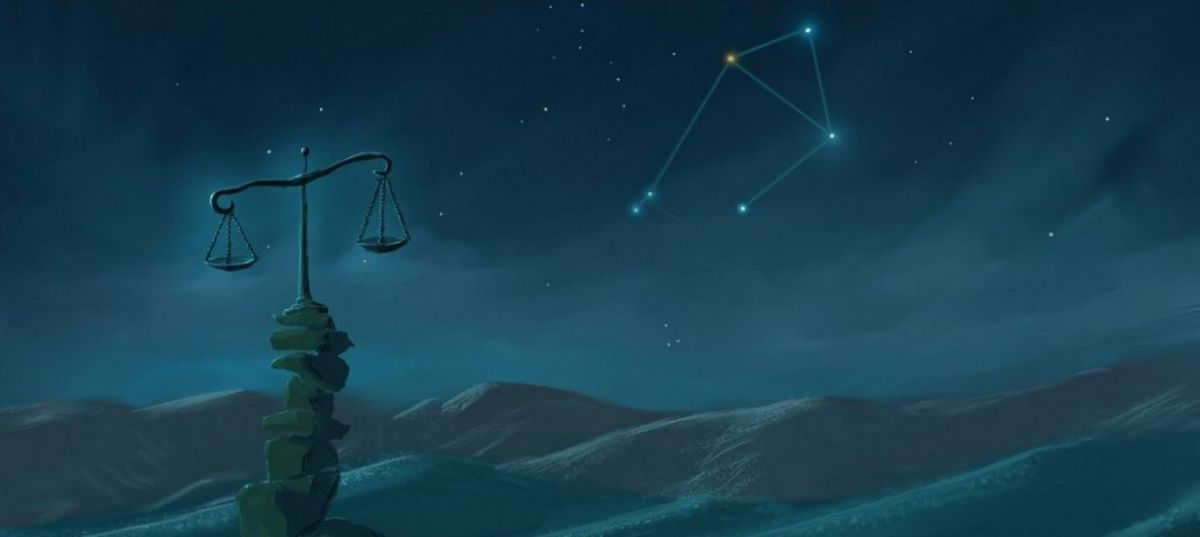
Libra is a constellation in the night sky that is part of the zodiac. Unlike other constellations, it does not represent a living creature. Covering an expansive area of 538 square degrees, it is bordered by Virgo, Scorpio, Hydra, Serpens, and other constellations.
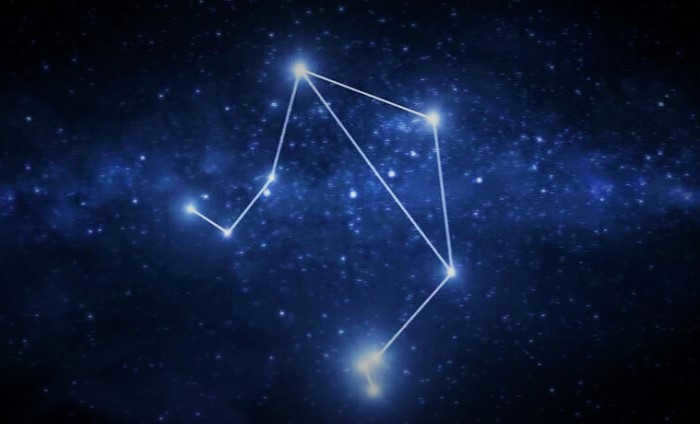
Legends and Folklore
The ancient Greek goddess of justice, Dike (also known as Astrea), is closely associated with the constellation Libra. Dike is the daughter of Zeus, the god of thunder, and Themis, a Titanid and the embodiment of justice. With her blindfolded eyes, Dike symbolizes the impartiality of justice – she does not discriminate. Whenever Dike witnessed a crime, she would report it to Zeus, who then took it upon himself to punish the wrongdoer. The scales held by the goddess represent the maintenance of order and balance. In order to remind people that justice will eventually catch up with them, Zeus immortalized Dike in the night sky, alongside her scales.

Fascinating Information
Stars Associated with the Libra Constellation
The constellation Libra contains numerous stars with multiple names. For instance, Sigma has been referred to as Brachium, Cornu, and Zuben-Hakrabi.
However, Ipsilon, another star in Libra, lacks an individual designation. It is officially known as HD 139063 and is classified as an orange giant with an age exceeding three billion years.
HD 140283 (Methuselah) is located in the Libra constellation.
Additional entities
Within Libra, there are 83 stars and no objects listed in Messier’s catalog. However, there are still fascinating entities to explore. One intriguing example is the May Lybrids, which consist of numerous meteor streams. Additionally, Libra is host to various spiral and lenticular galaxies, as well as a singular globular star cluster.
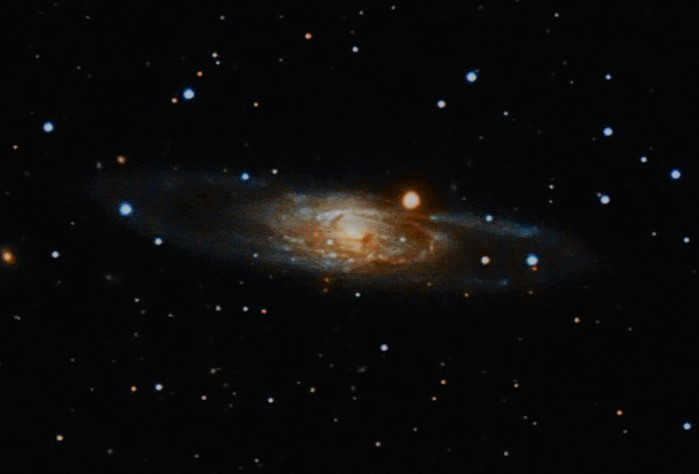
Observation
The Libra constellation is easily visible in the sky. It is most visible in the southern part of the Russian Federation and in some areas of its central region from April to May. Observations should be conducted in latitudes ranging from +61 to -90 degrees. It is important to note that the constellation cannot be seen from October 31 to November 22 due to the presence of the Sun.

Oh, the mesmerizing beauty of twinkling stars! For centuries, they have captivated the gaze of people, causing their hearts to flutter and inspiring them to make wishes upon the fleeting trails of dying stars. The imaginations of astronomers, as they gaze into the night sky, know no bounds. Through their creative vision, they have seen the outlines of fairy-tale creatures and majestic birds, mythical beings, and valiant heroes within the constellations. Each constellation is steeped in ancient legends and myths, which we will explore in this book. Join us on a journey to discover the tales of Andromeda and Hercules, the Dragon and the Crane, Cassiopeia and Orion, Perseus and the Northern Crown.
Contents
This is an excerpt from the book “Legends and Myths about Stars and Constellations”, provided by our partner LitRes.
Libra is a rather unremarkable constellation in the zodiac. It lacks bright stars, and the ones it does have are not easily recognizable as a scale figure. The star in the lower right corner has a faint greenish hue, making it the only green star visible to the naked eye.
In the middle latitudes, the appearance of Libra in the sky signaled the time for sowing, and the ancient Egyptians would see it as a sign to start harvesting their first crop at the end of spring. The scales, symbolizing balance, served as a reminder to ancient farmers to weigh their harvest.
The name of the constellation has different origins, which are associated with various myths and legends.
Legend has it that the ancient Roman Emperor Augustus was an equitable ruler who cared for his people and upheld justice, as recounted in the poems of the esteemed Roman poet Virgil. In gratitude, his subjects decided to honor their ruler by placing the Libra constellation between Virgo and Scorpius, thereby encroaching on Scorpius’ rightful space. This new constellation was dedicated to Augustus as a symbolic representation of his fairness and nobility.
Another legend tells of the goddess Themis, who was the daughter of Uranus and Gaea and the second wife of Zeus. She gave birth to the three fates: Klotho, Lachesis, and Atropos. Aeschylus wrote that Themis was also the mother of Prometheus. Thanks to Themis, the goddess of justice, Zeus ensured that law and order reigned on Mount Olympus. Themis would call the meetings of the gods and oversee matters of order and justice.
The goddess Themis is often portrayed wearing a blindfold to symbolize her impartiality. She is also depicted holding a sword, scales, and sometimes a horn of plenty, representing accuracy and balance. Surrounding her are numerous priests, who serve as judges and administer justice among the people.
In ancient Greek mythology, the constellation of Libra was associated with the legend of the world’s creation.
Gaea-Earth was tormented by the cries of the ailing children. In response, she called upon her children, the Titans, to rebel against their father Uranus. However, the Titans were hesitant to confront their own father. Only the youngest Titan, Kronos, cleverly plotted against Uranus and seized control. As a punishment to Kronos, the goddess Nykta unleashed a horde of terrifying deities upon the world. Among them were Erida, the goddess of discord, Apata, the goddess of deceit, Thanatos, the god of death, Nemesis, the goddess of retribution, and numerous other equally malevolent gods and goddesses. These deities brought chaos, death, falsehood, fear, suffering, and discord to Kronos’ dominion….
Zeus, the son of Cronus, rose up against his father. Joined by his siblings, he engaged in a fierce battle against Cronus and the Titans, vying for control of the world. Numerous Titans, discontent with Cronus’ reign, aligned themselves with Zeus. In the end, Zeus’ adversaries quaked with fear as they suffered defeat. Zeus shackled them and banished them to the dark and desolate abyss of Tartarus.
After defeating Cronus, Zeus brings an end to the lawlessness and establishes order on Earth. He shares dominion over the world with his brothers, assigning the sea to Poseidon, the underworld to Hades, and keeping the sky for himself. Seated on a throne in a golden palace atop Mount Olympus, Zeus is surrounded by a multitude of gods. From his lofty perch, Zeus oversees human affairs and enacts fair laws on Earth. Woe betide anyone who dares to disrupt the order established by Zeus. Dark clouds will shroud the sky, thunder will rumble, and a brilliant lightning bolt will strike the transgressor. Standing beside Zeus’ throne is Themis, the goddess of law and lawful order and his second wife. She presides over the gods’ assemblies on Olympus and ensures that no laws are broken in heaven or on Earth at the behest of Zeus.

